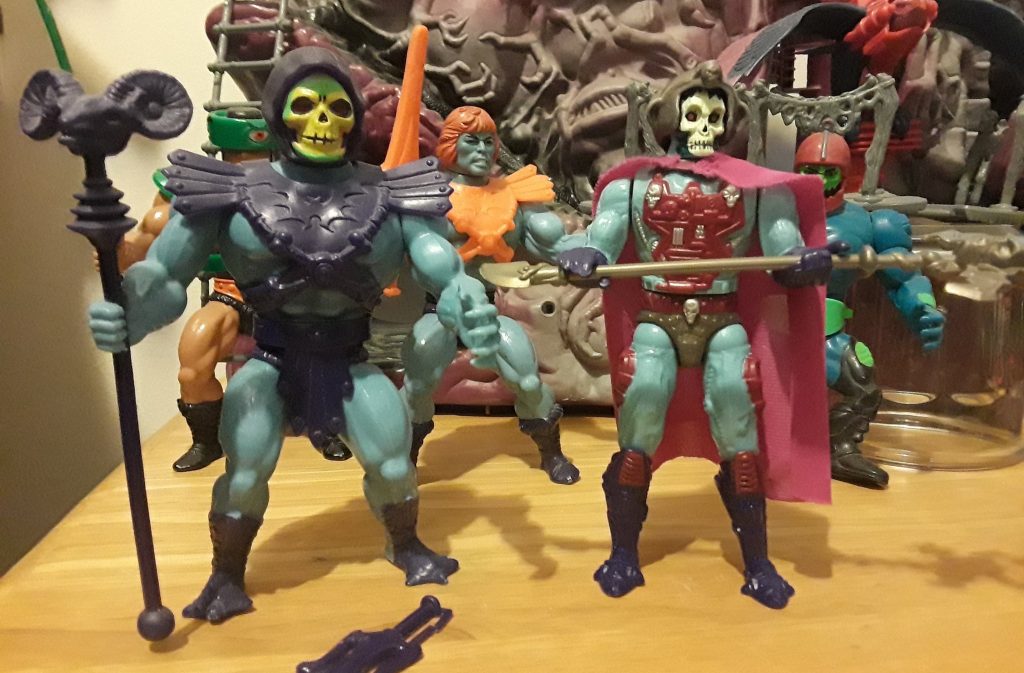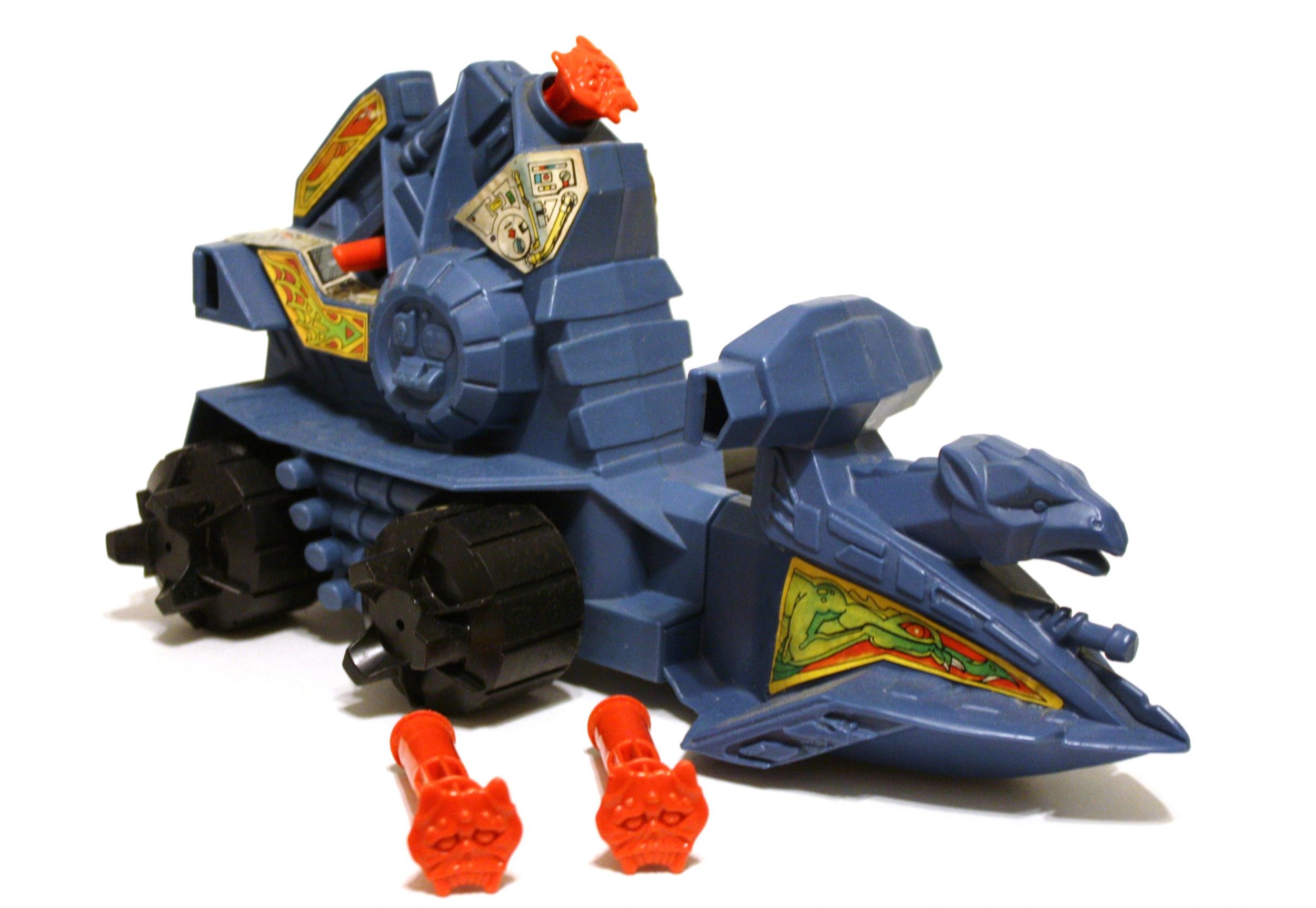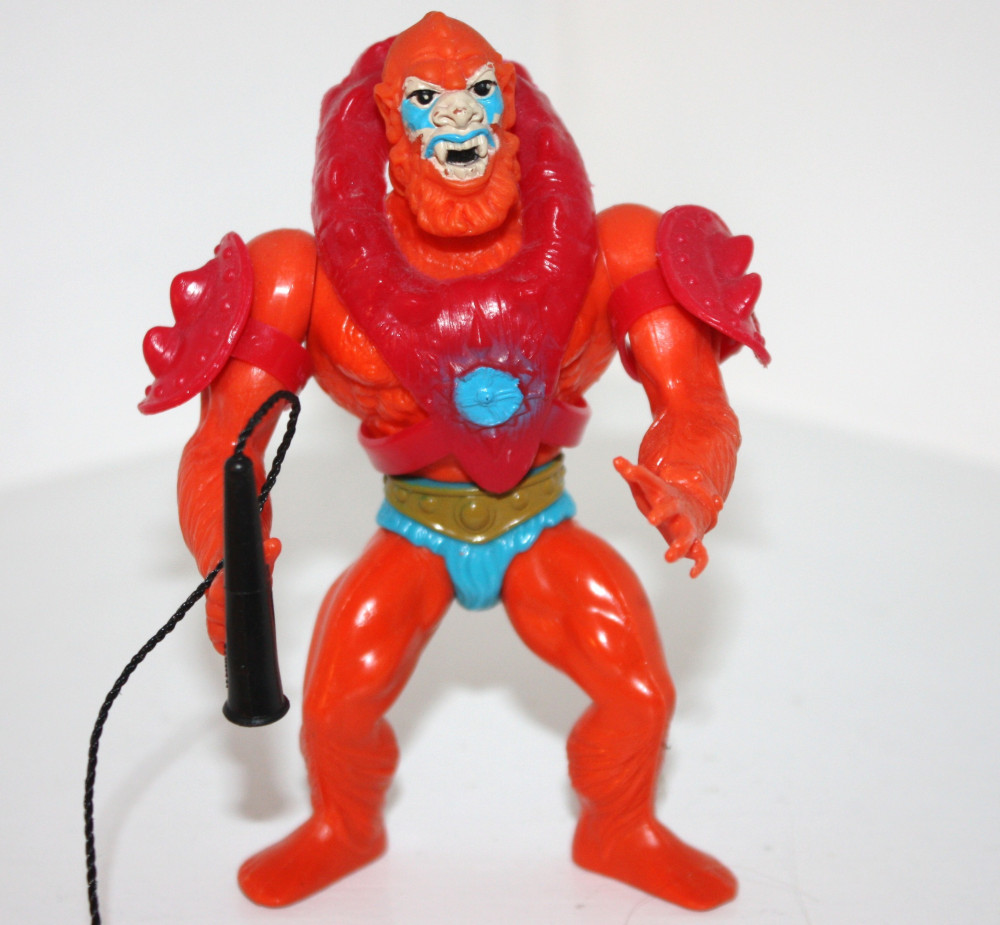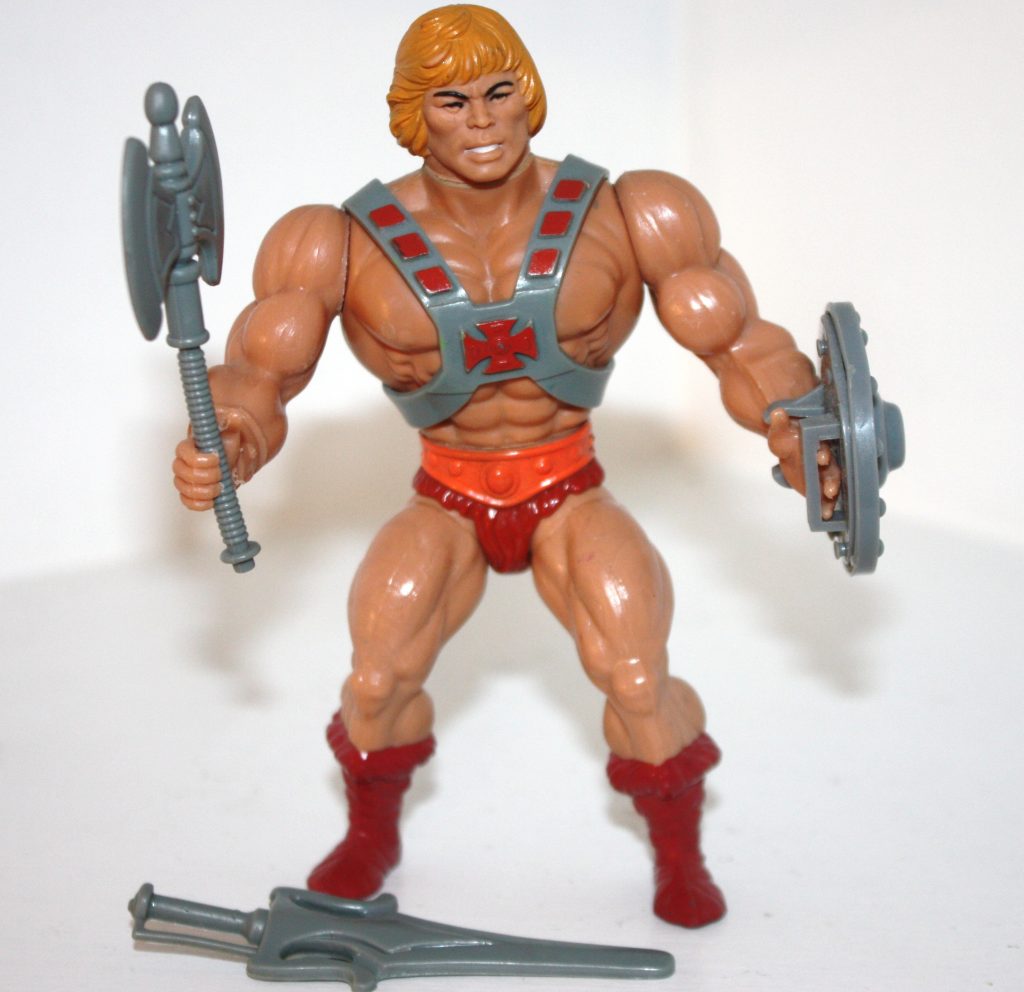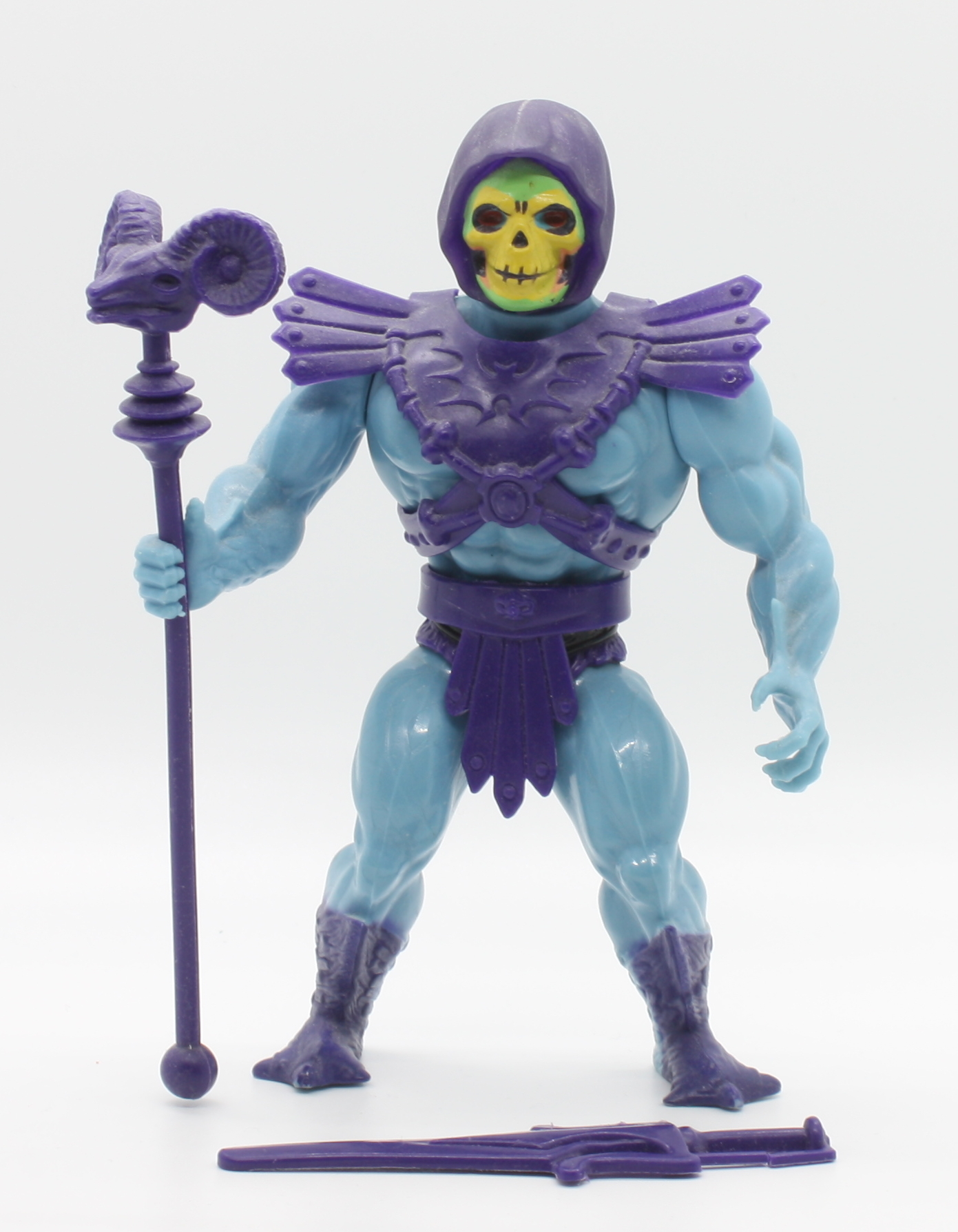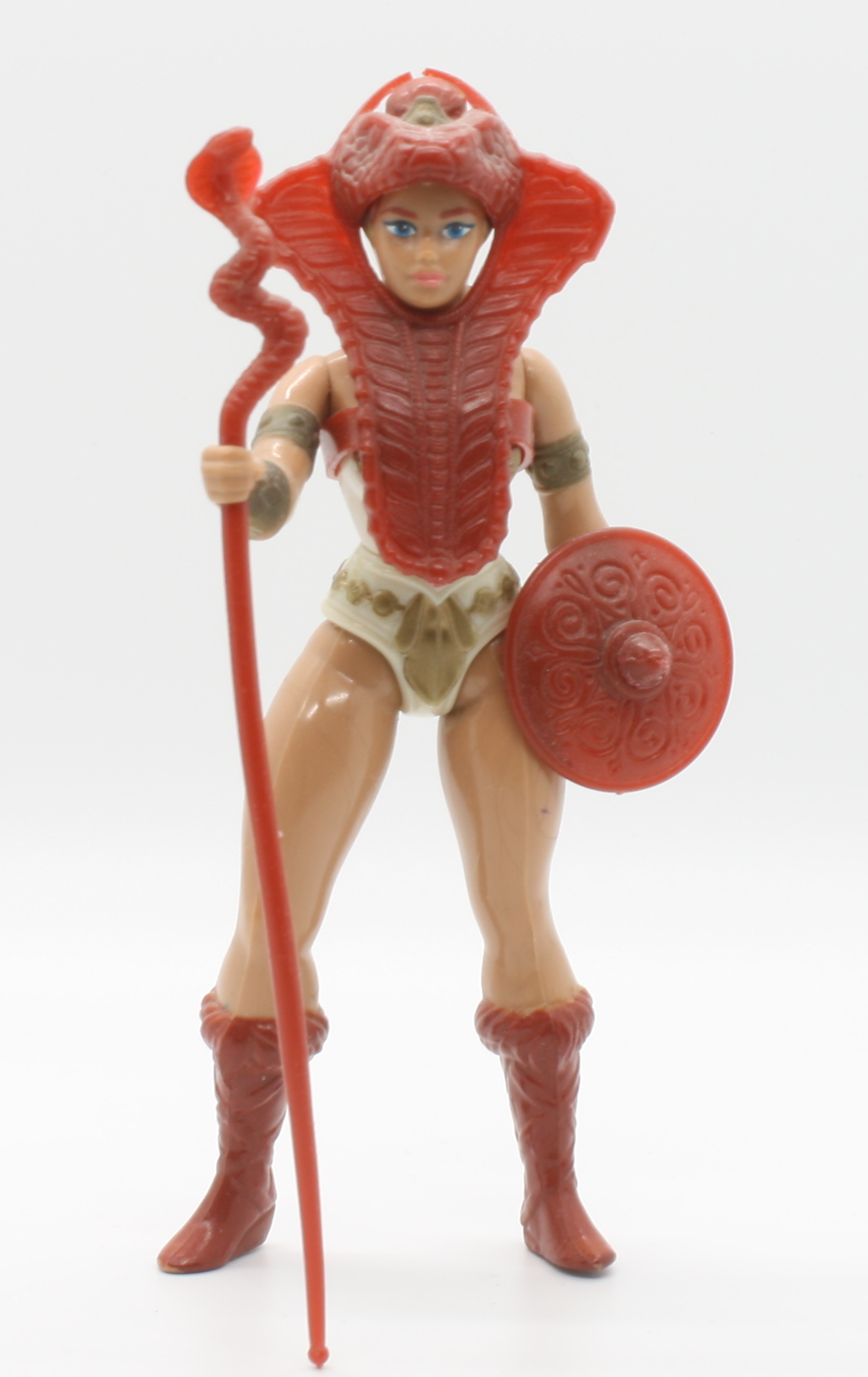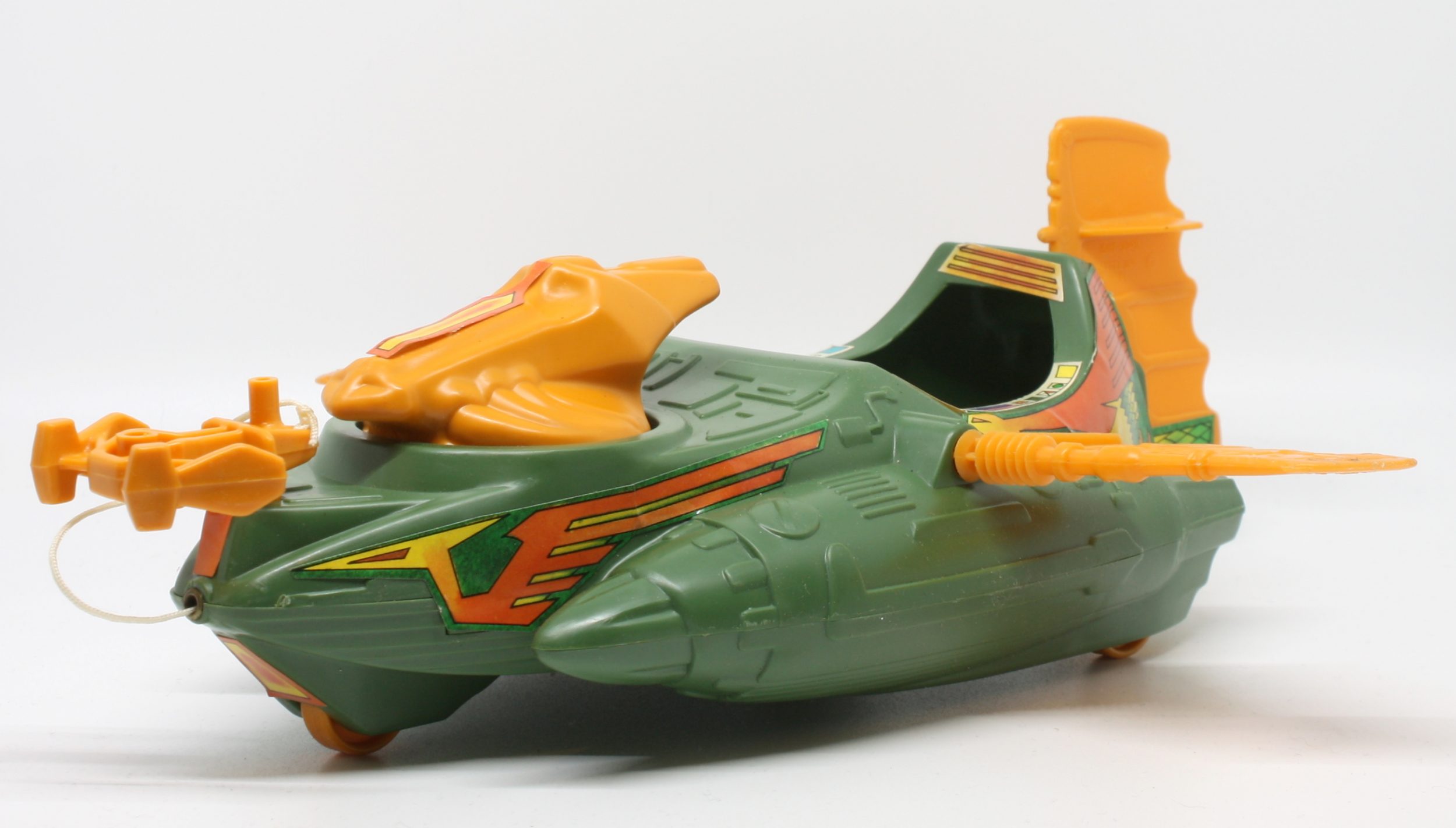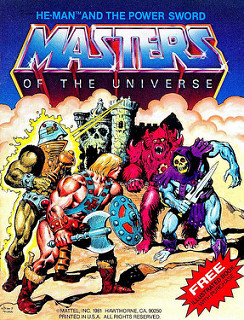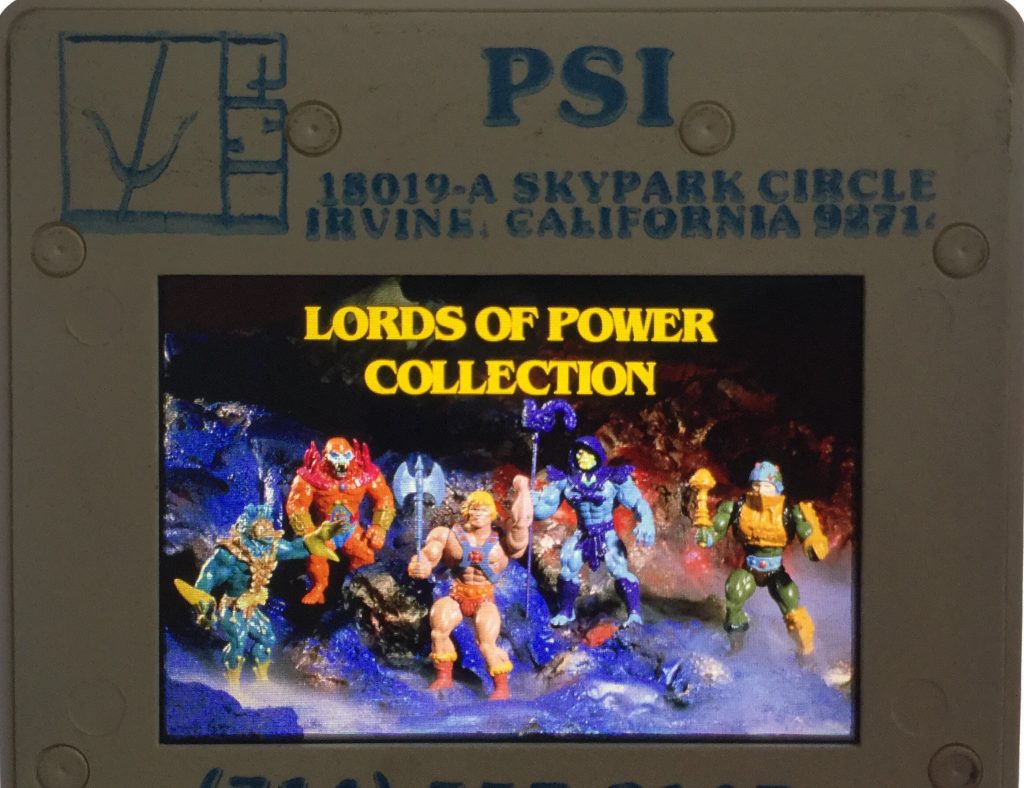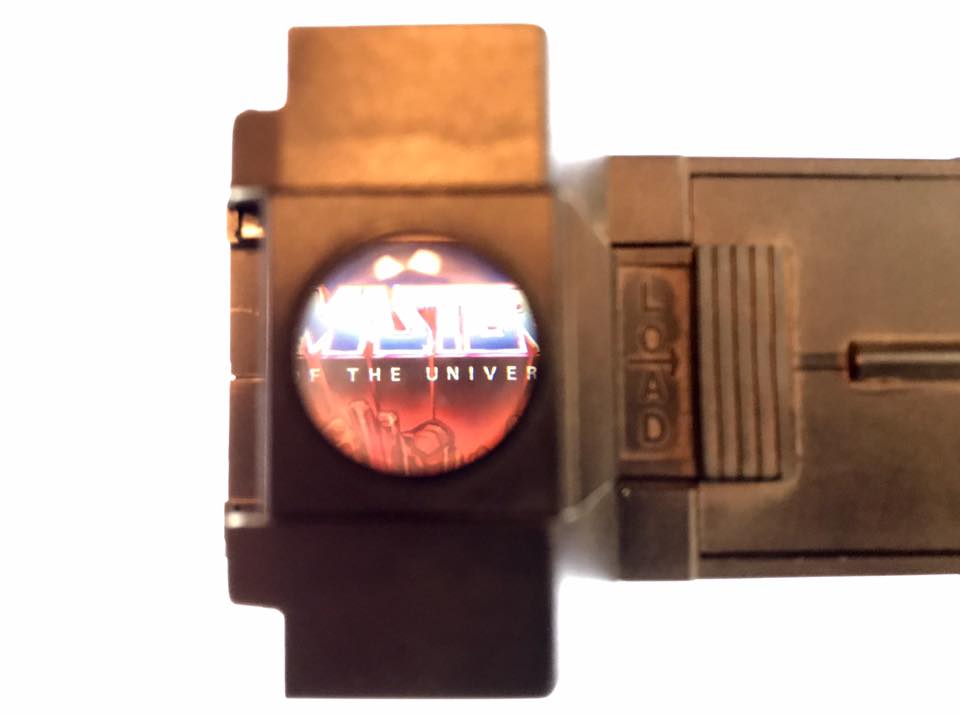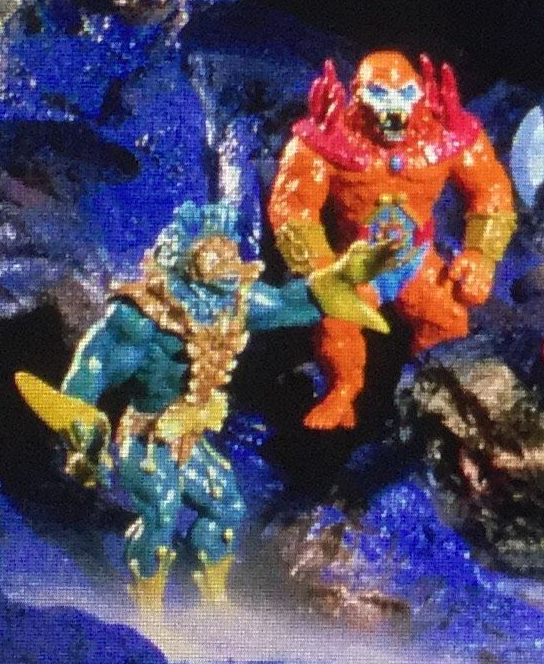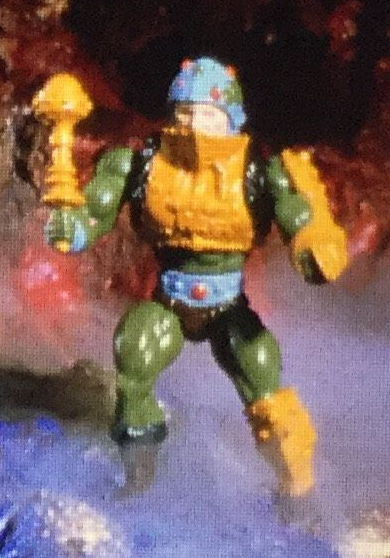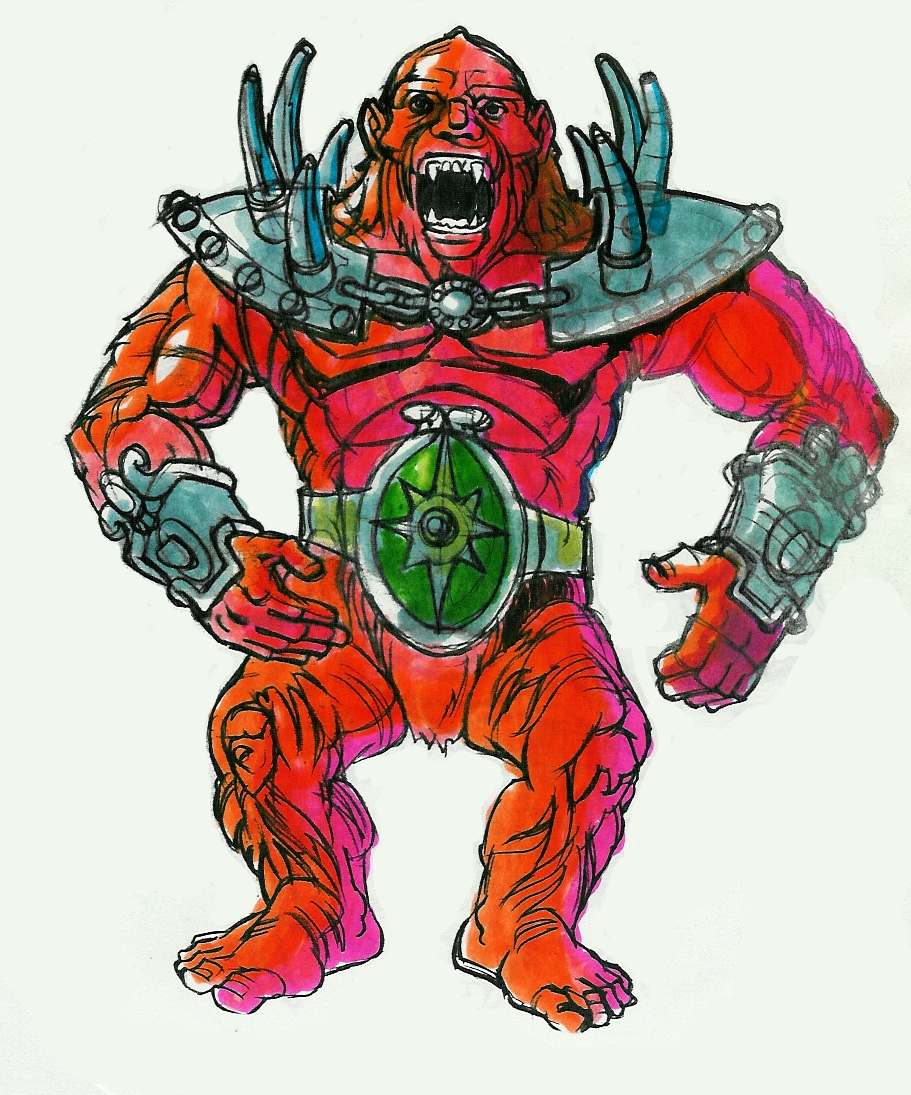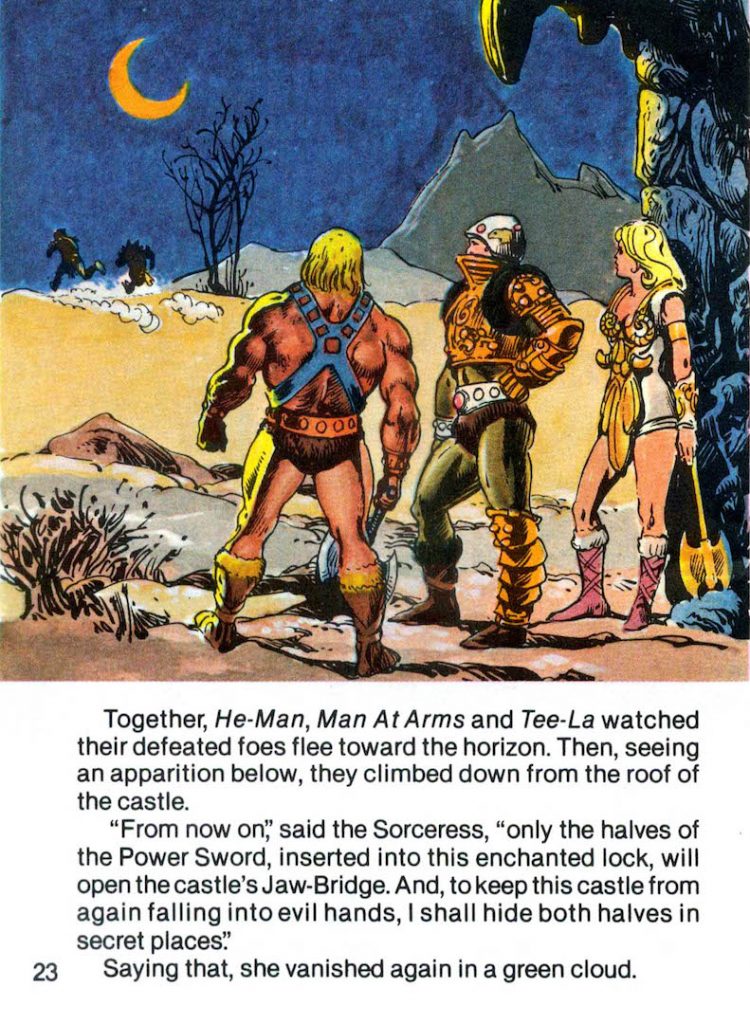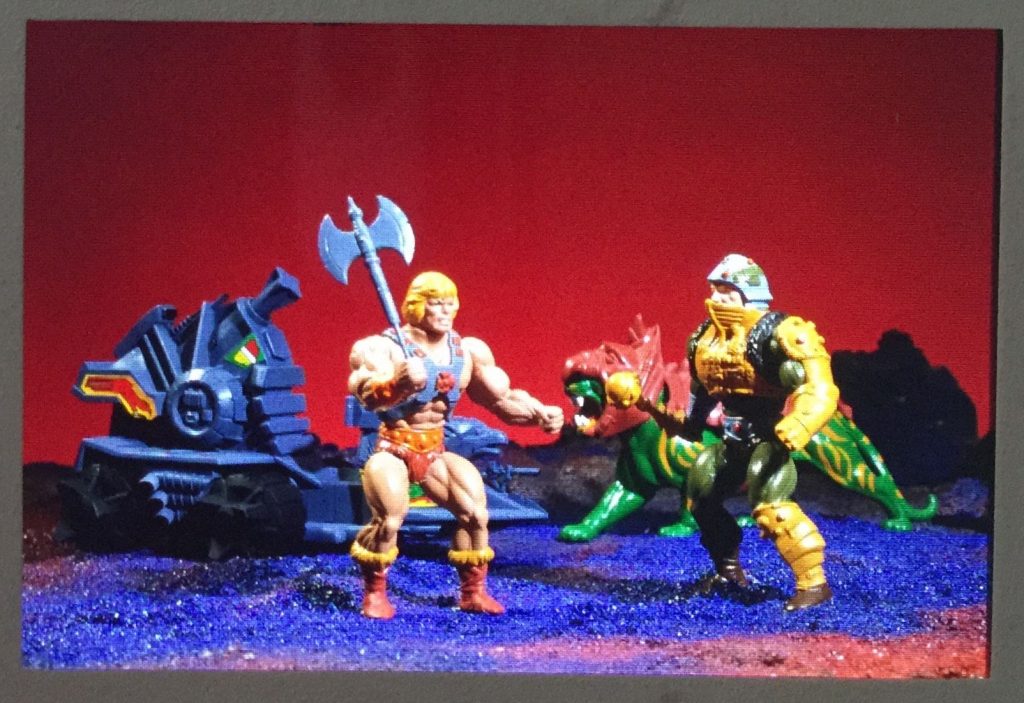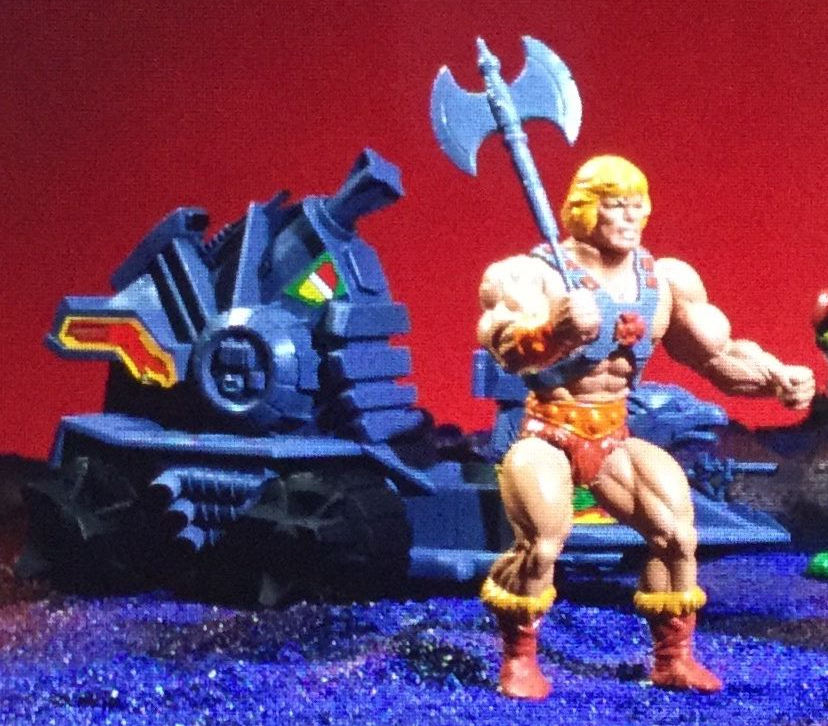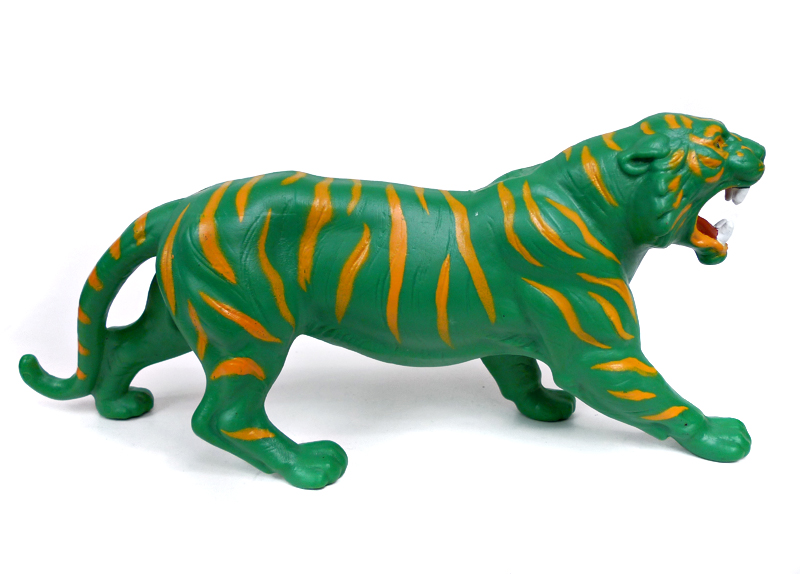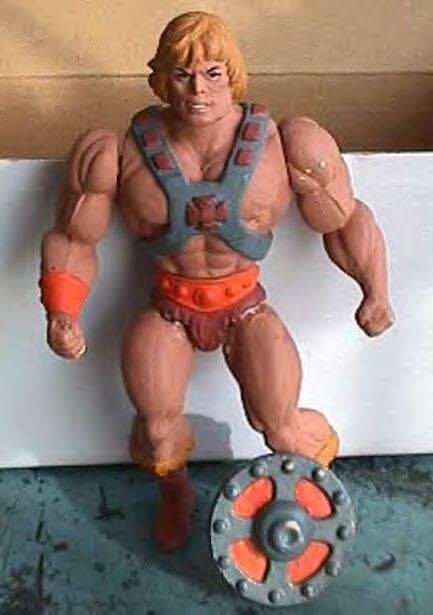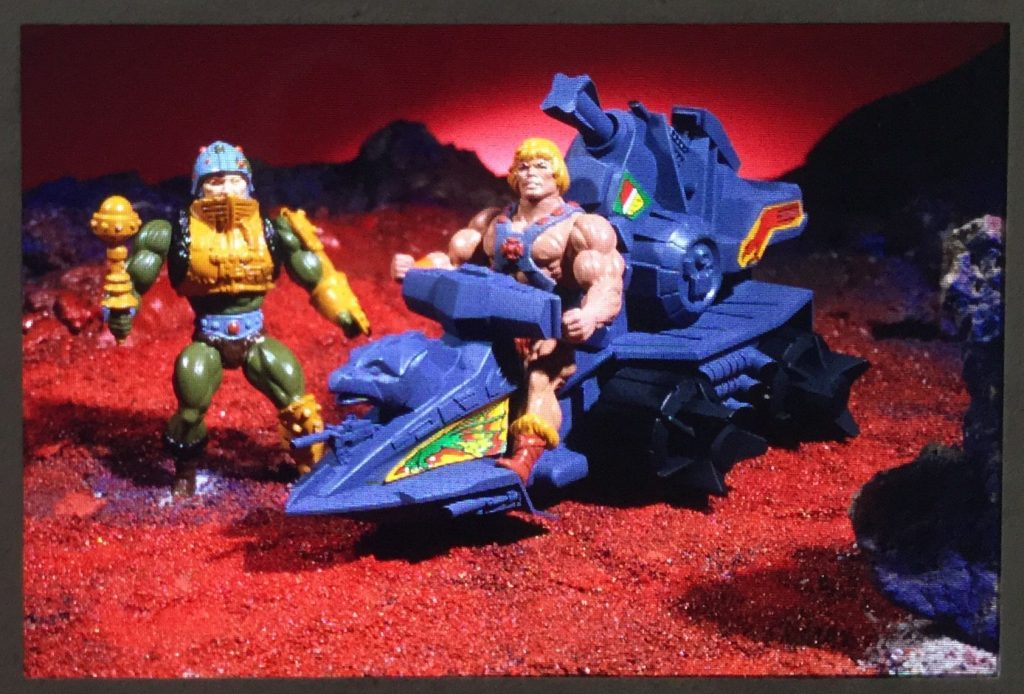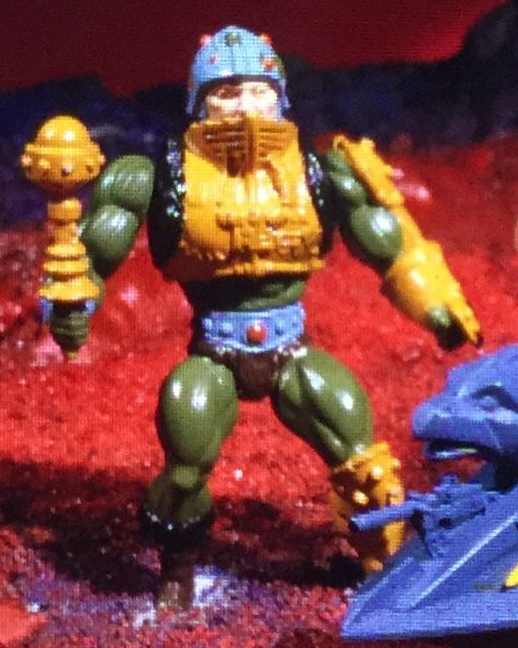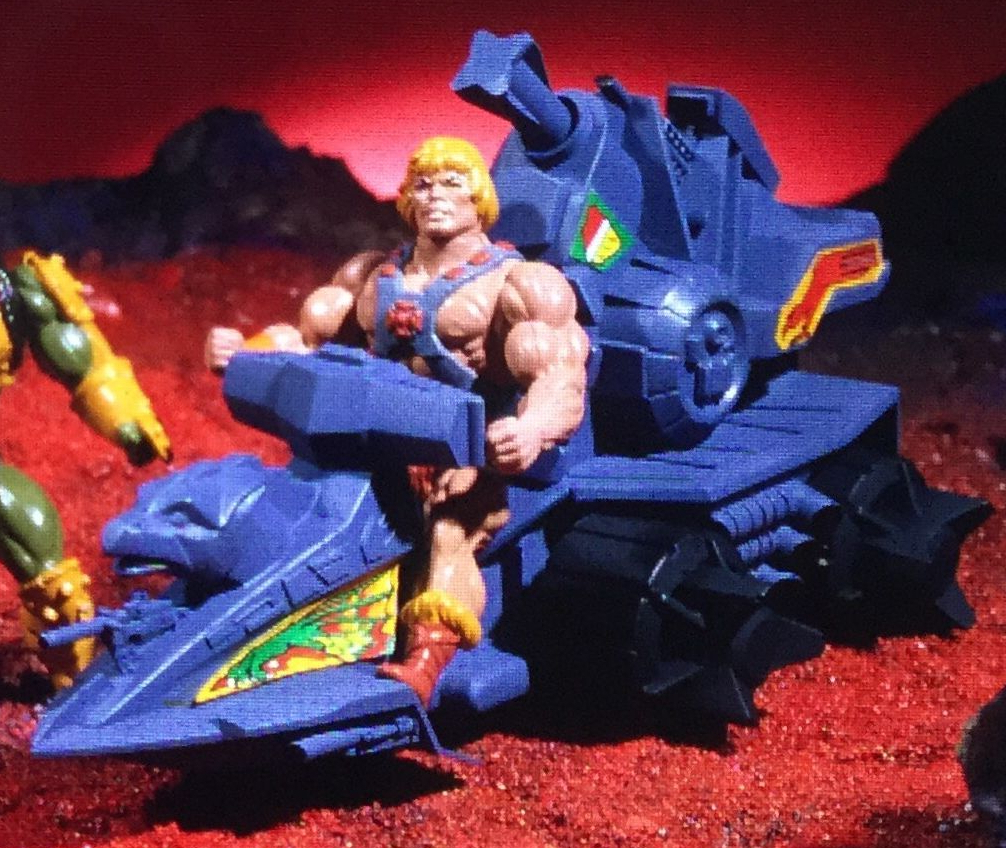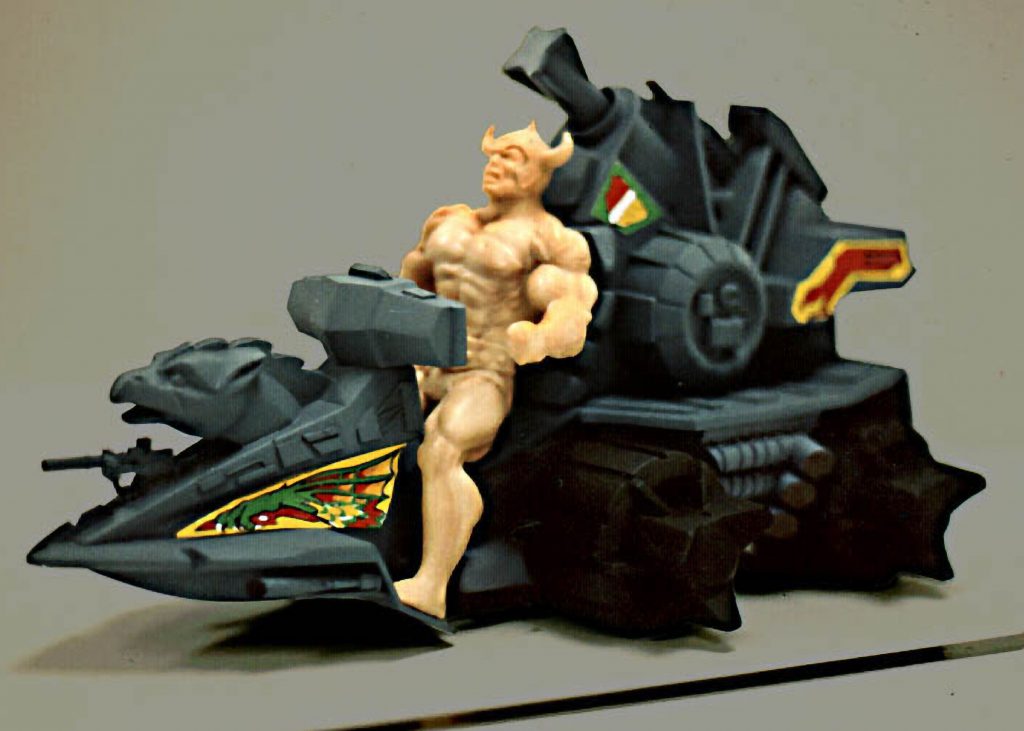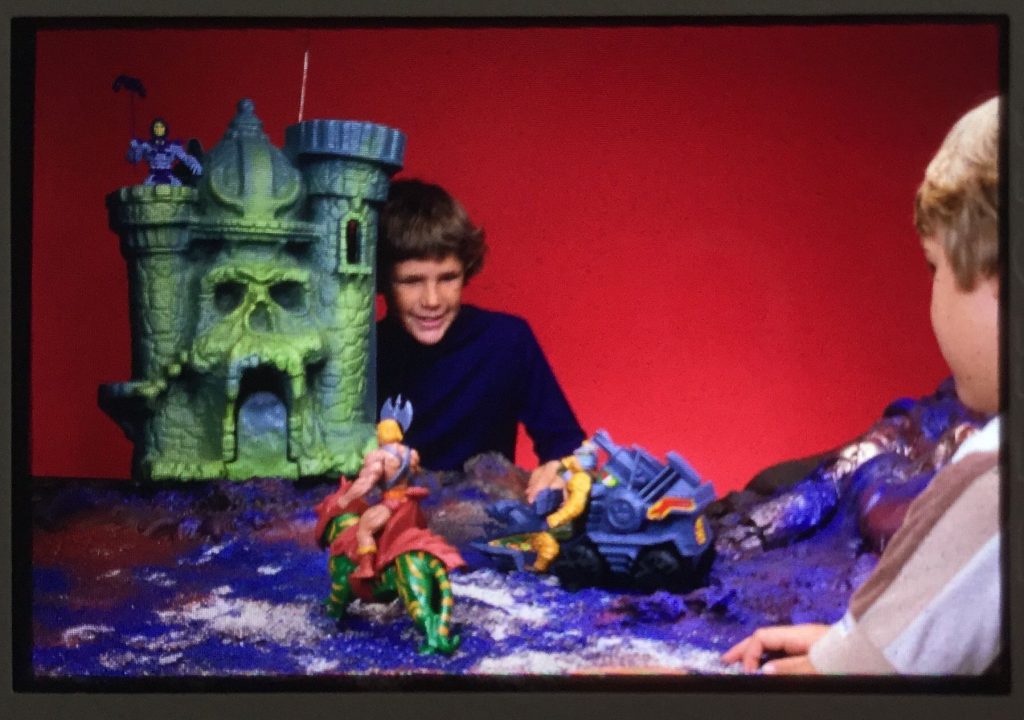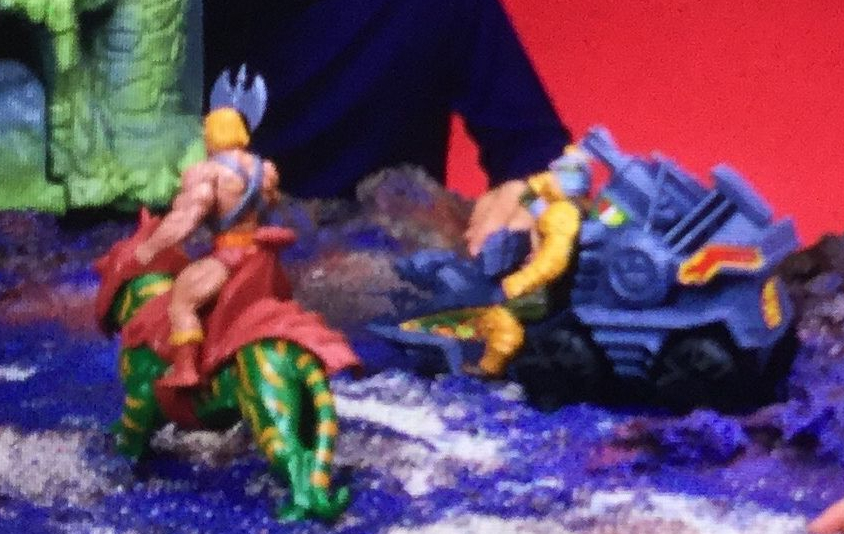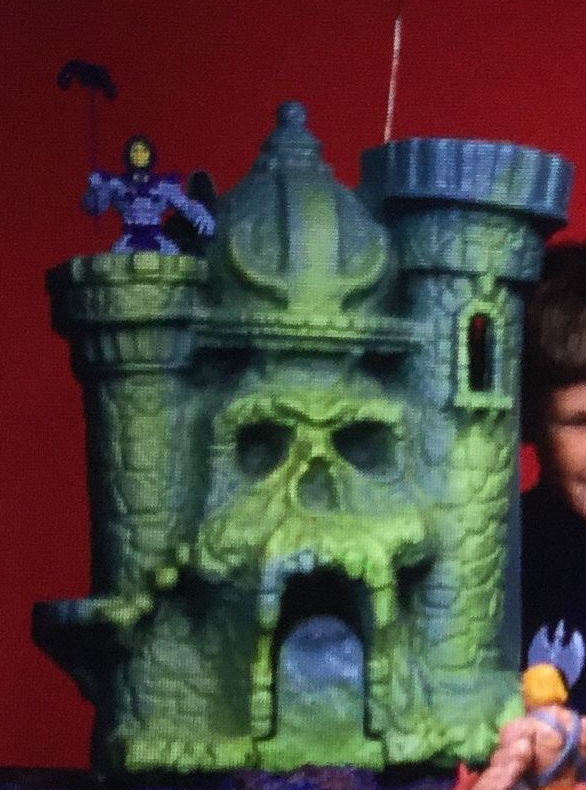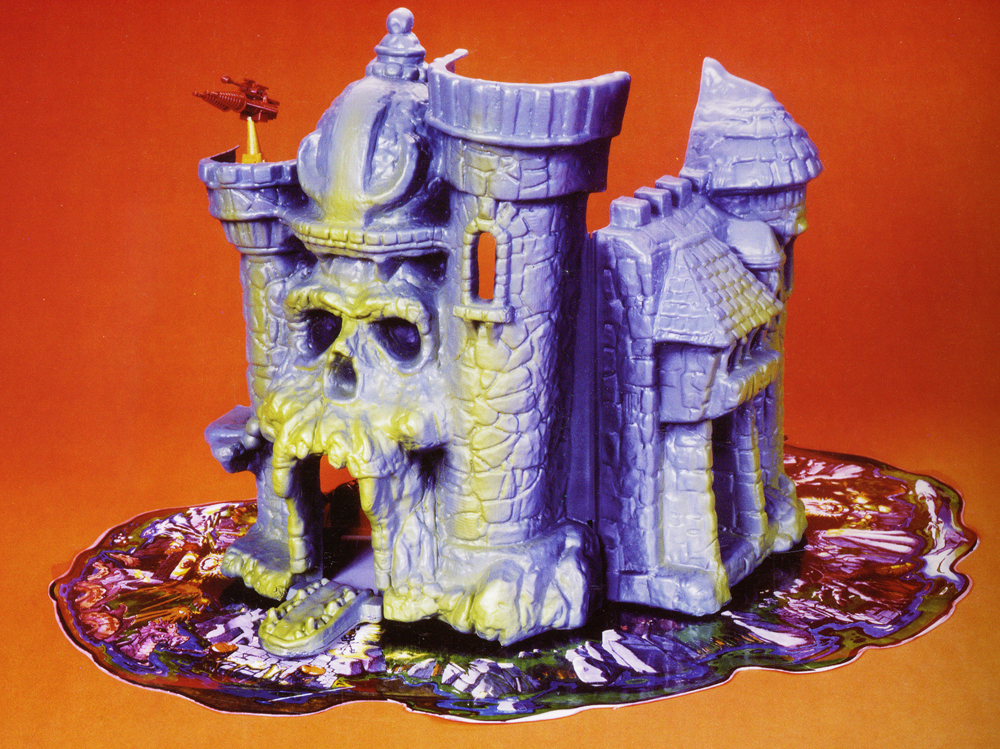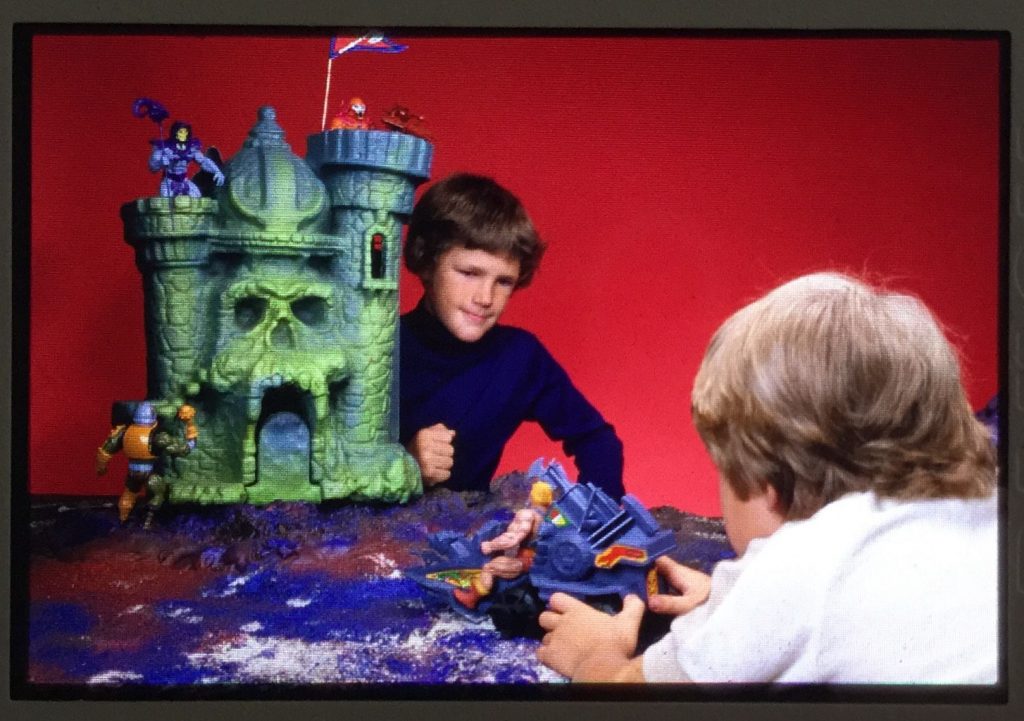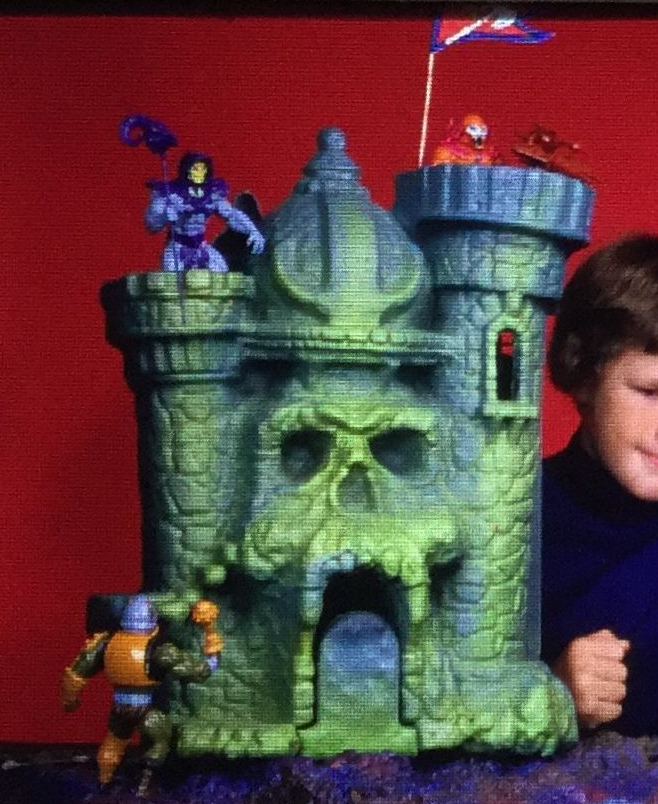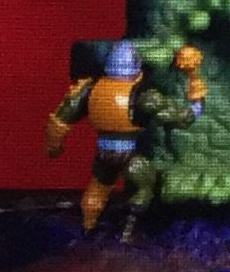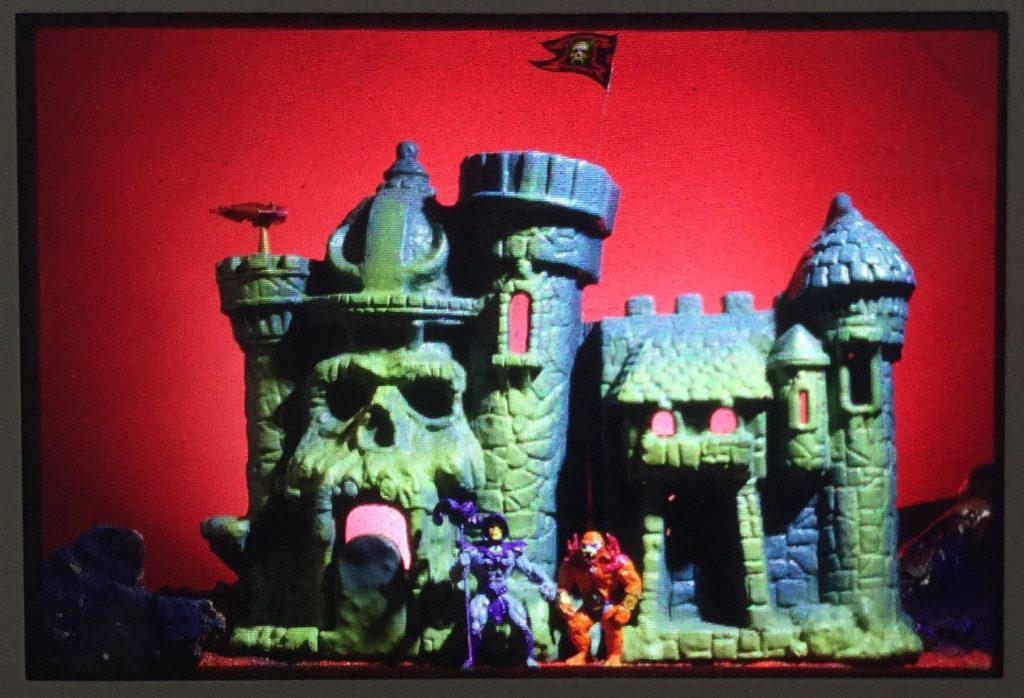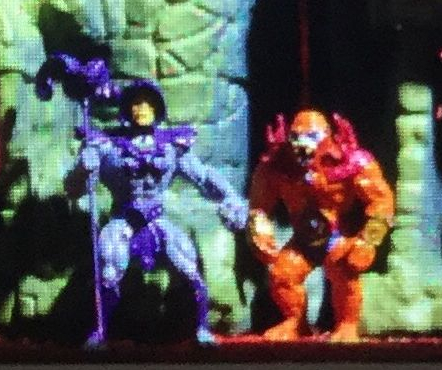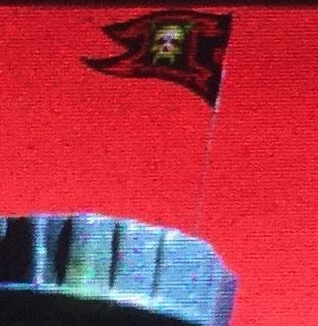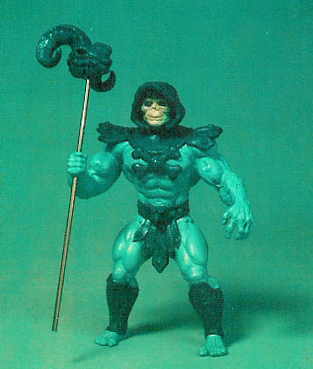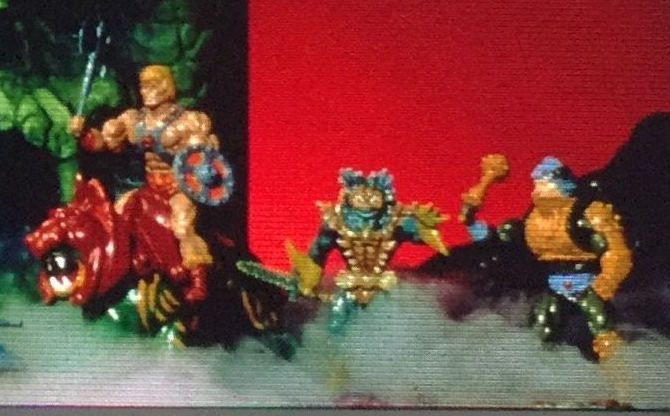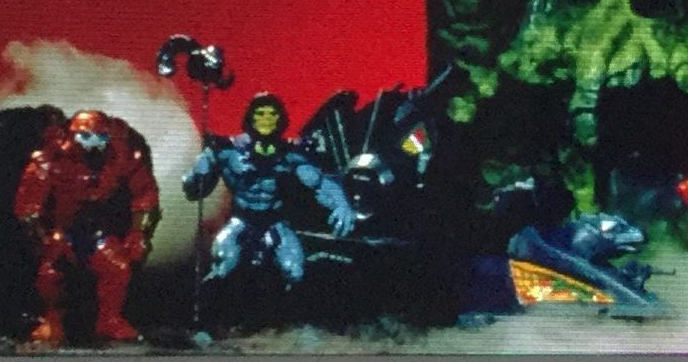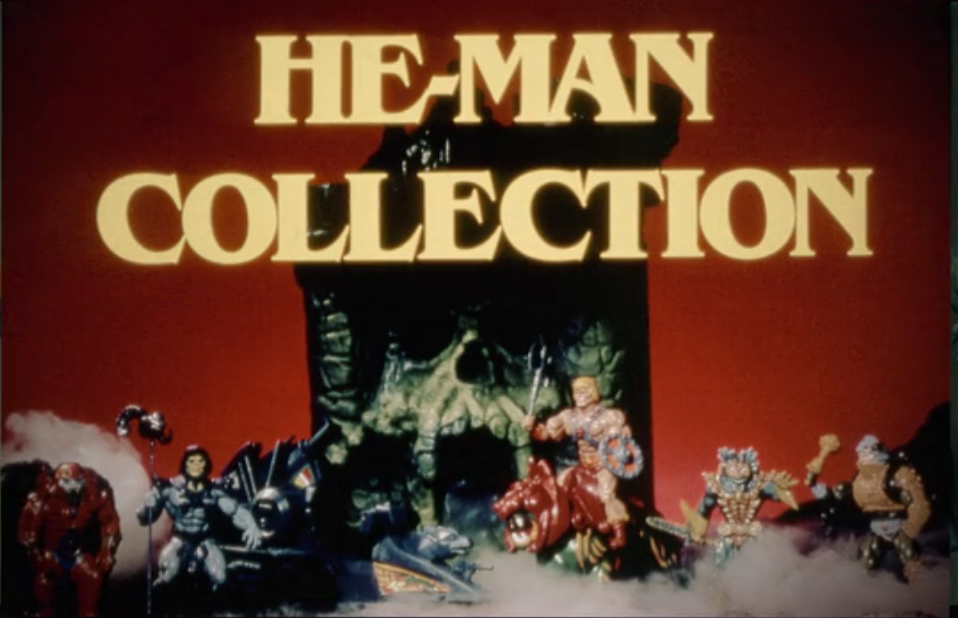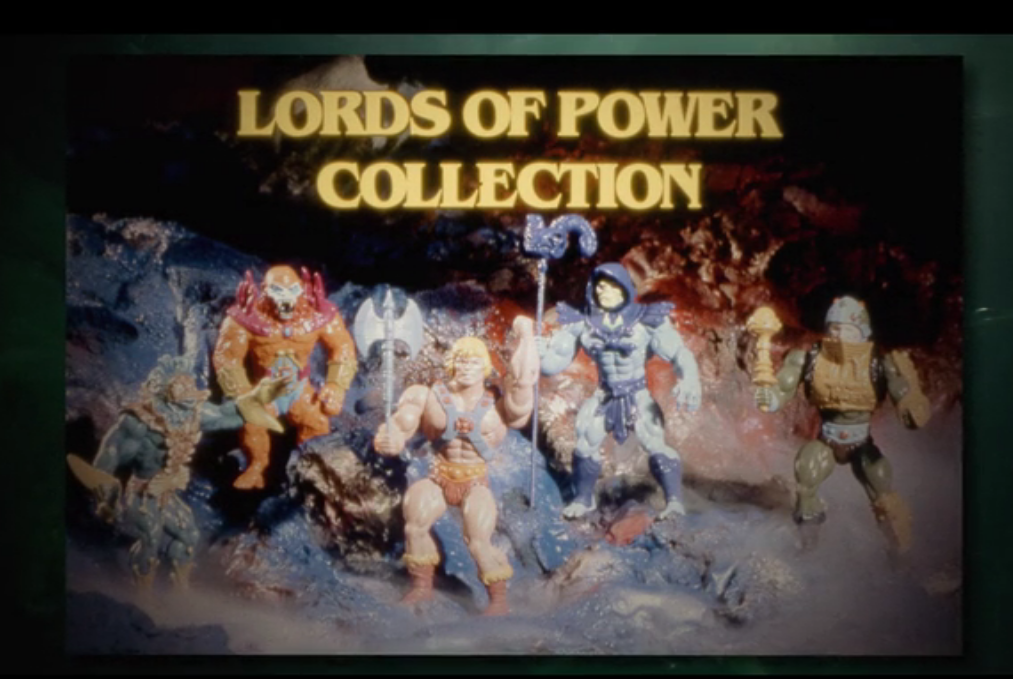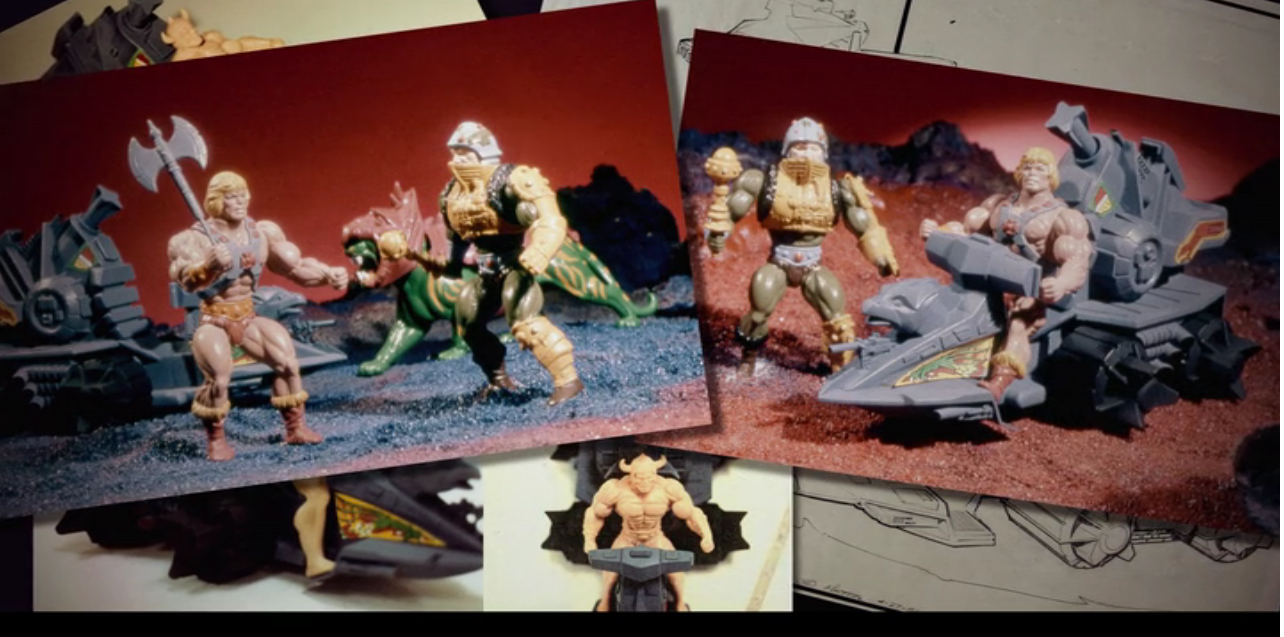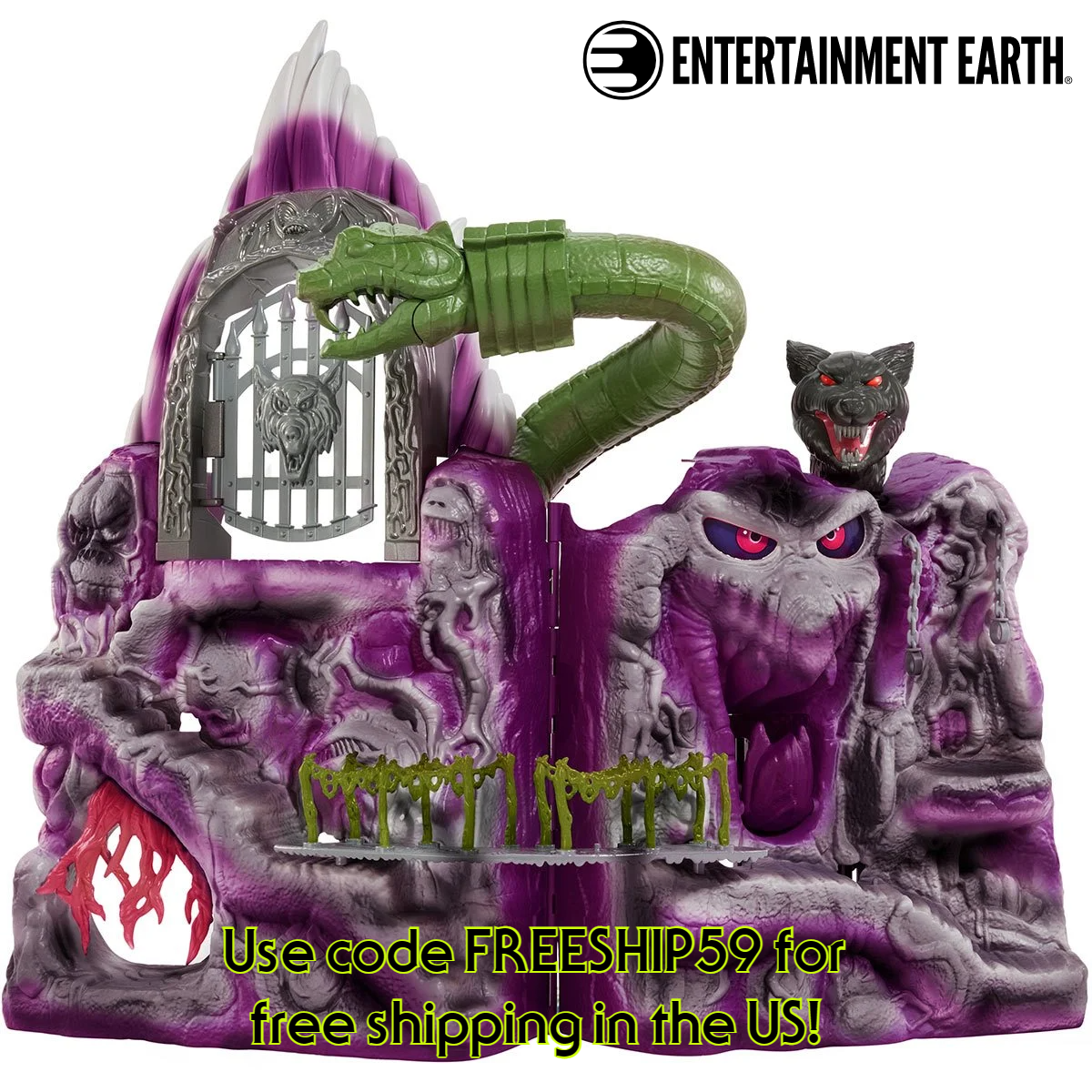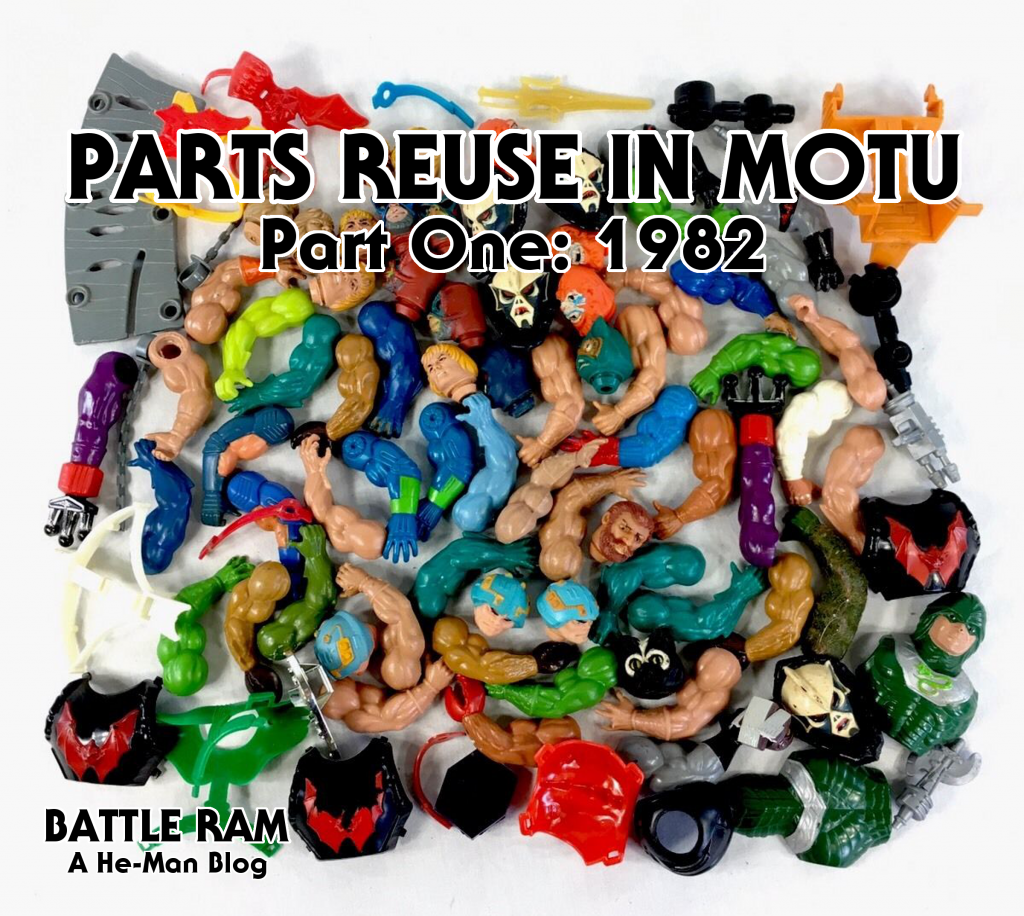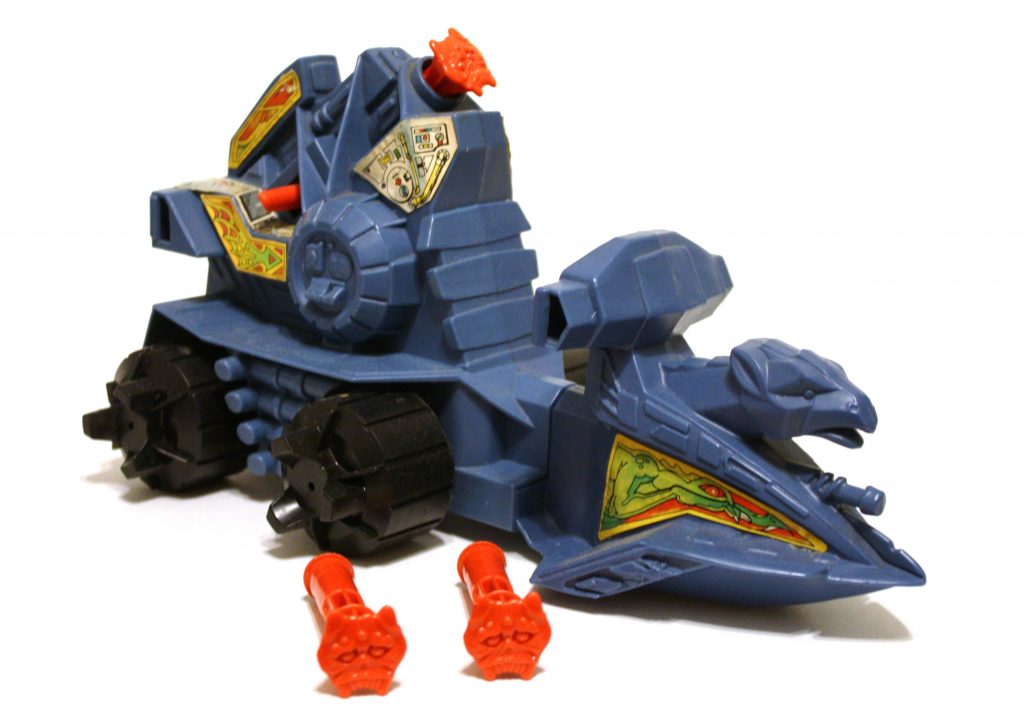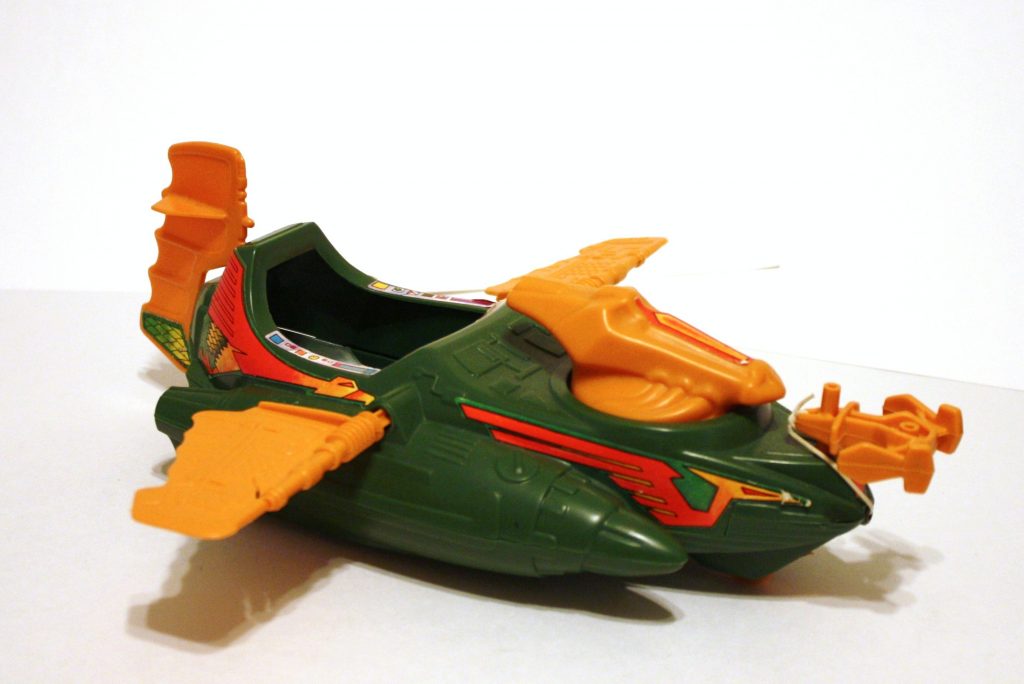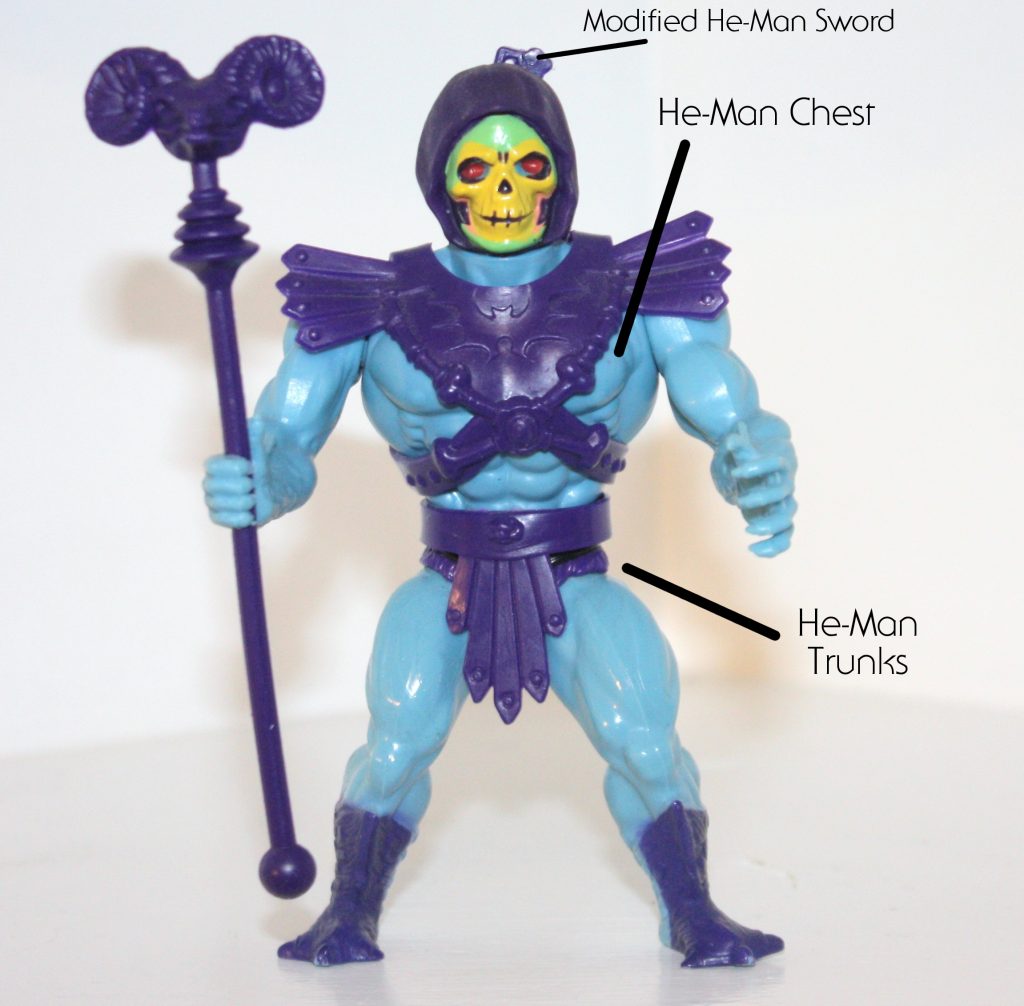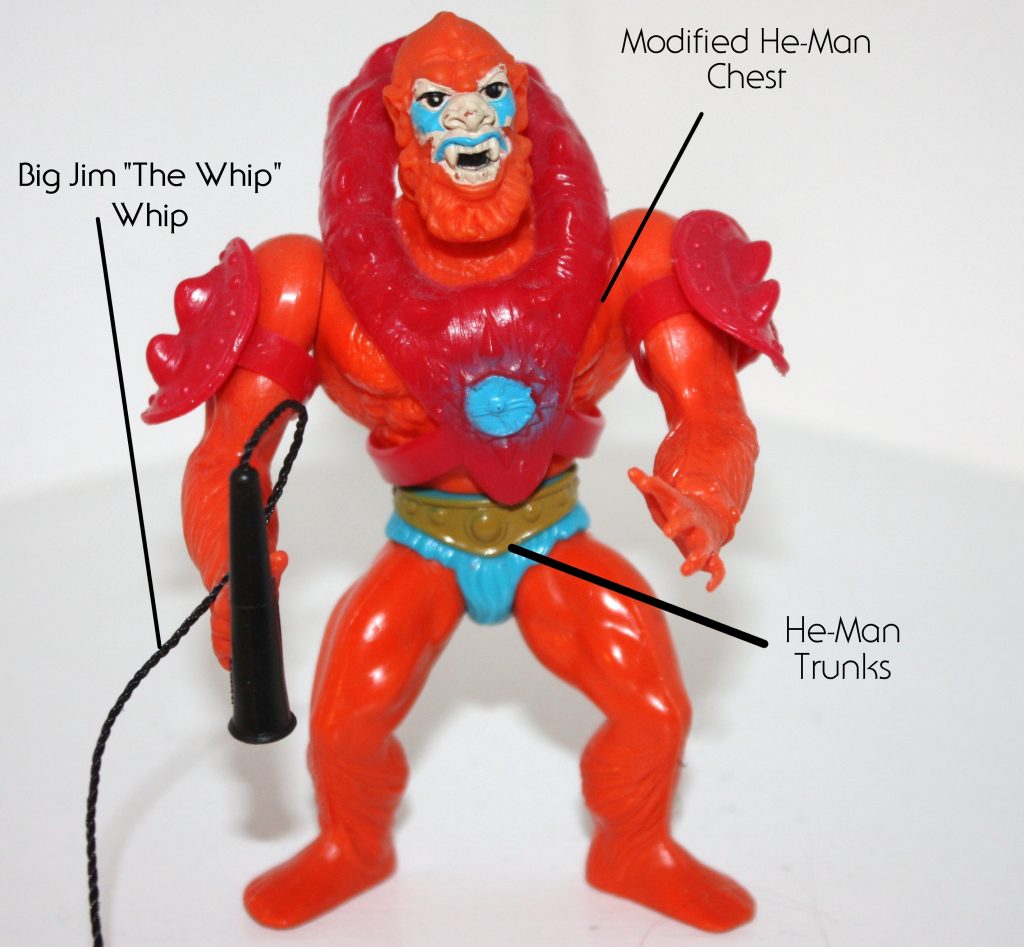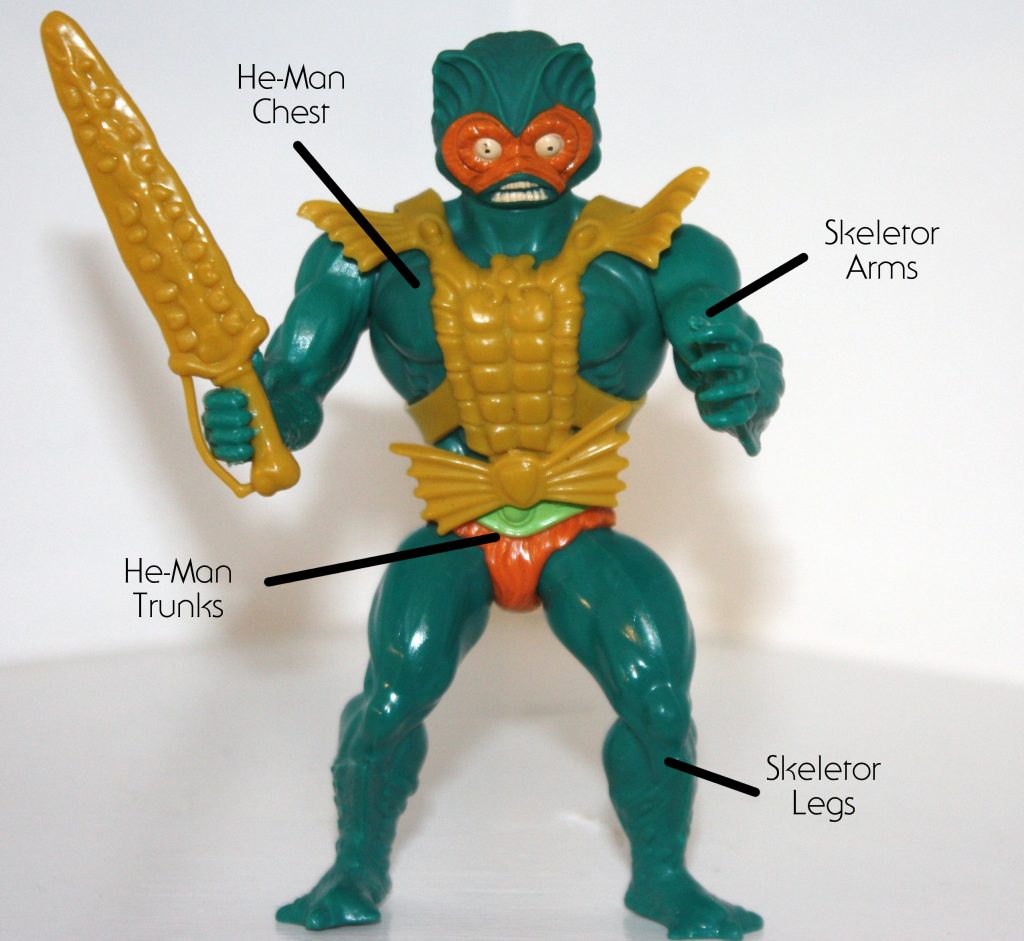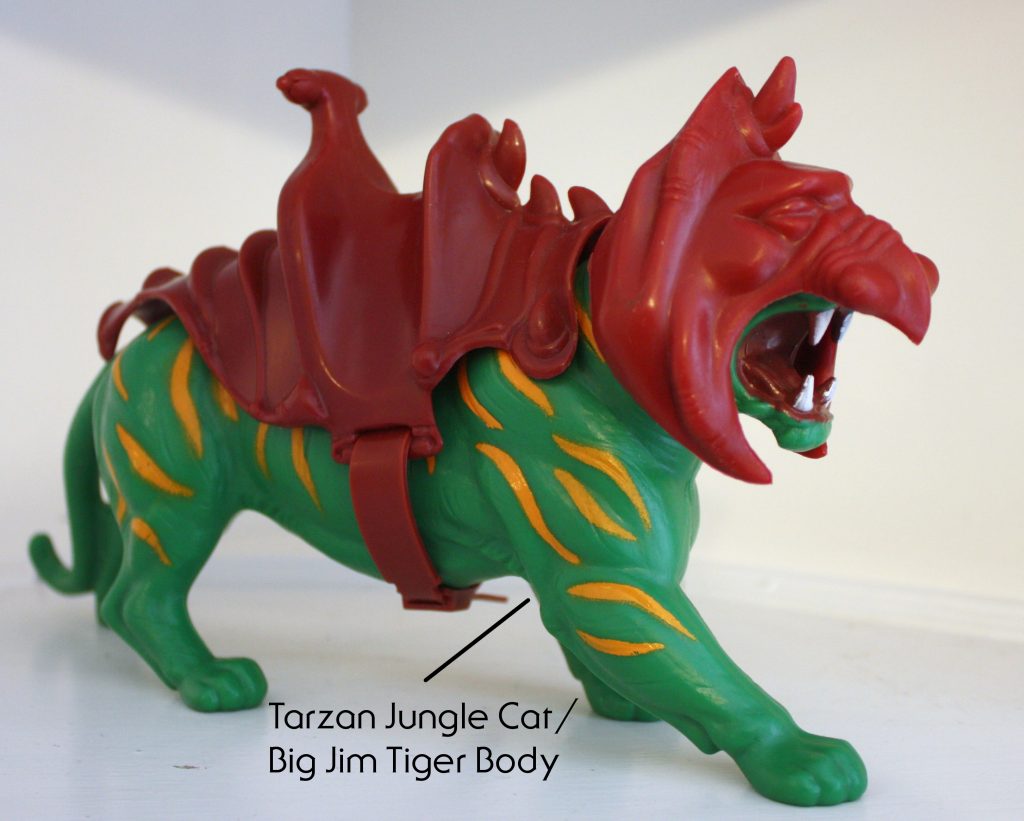
The 1989 He-Man reboot included no characters from the original Masters of the Universe line, other than He-Man and Skeletor. The so-called “New Adventures” line is filled with colorful, oddball villains (and, frankly, some less-than-exciting heroes). My favorite figures from the line are the various Skeletor variants, and the 1989 version is no exception.
The New Adventures series isn’t well loved by most He-Man fans, but in a way it seems like an effort by Mattel to step things up a notch. These figures that had better articulation, more sculpted detail, and quite a bit of painted detail compared to the original line, and with little or no reuse of parts.
All of the New Adventures Skeletor variants were based on designs by David Wolfram. The initial 1989 release was technically designed by Mark Dicamillo, but it had been modeled on Wolfram’s original Laser Light Skeletor design.
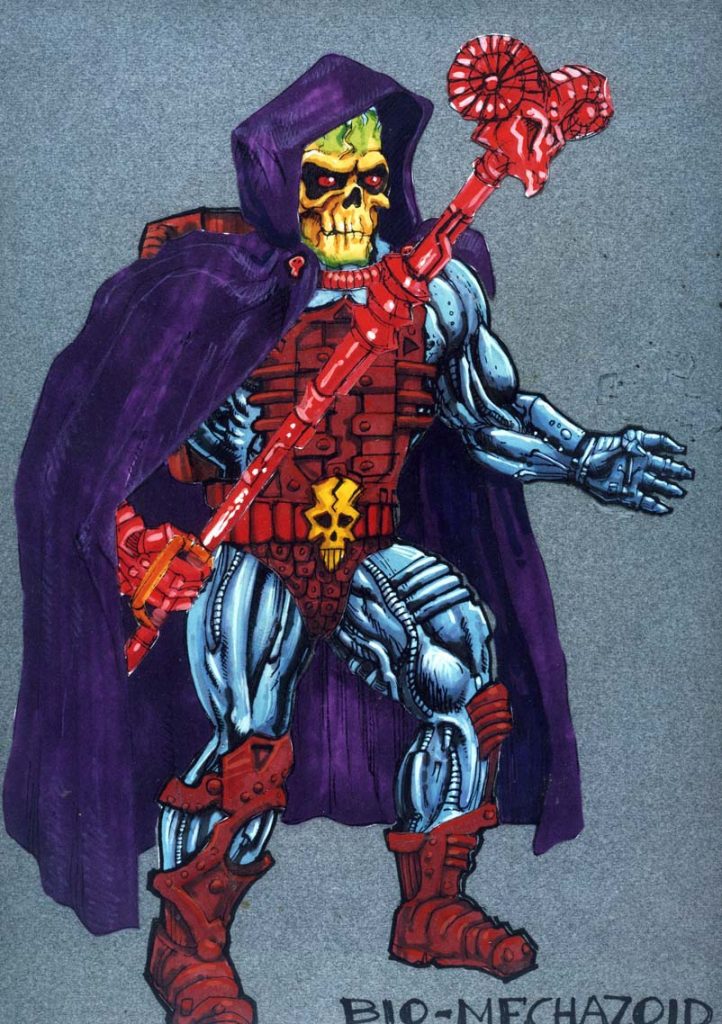

The broad conceptual ideas were carried over for the New Adventures design, but the color scheme was modified, initially with a lot of dark blue and red details, with a purple cape. In the concept art below (drawn up by David Wolfram for presentation) Skeletor was also given some kind of pouches at his legs, and a new red staff design featuring a human skull with a bat on top. He was given different boots and, for the first time, gloves. He also features a helmet rather than his usual cloth hood:
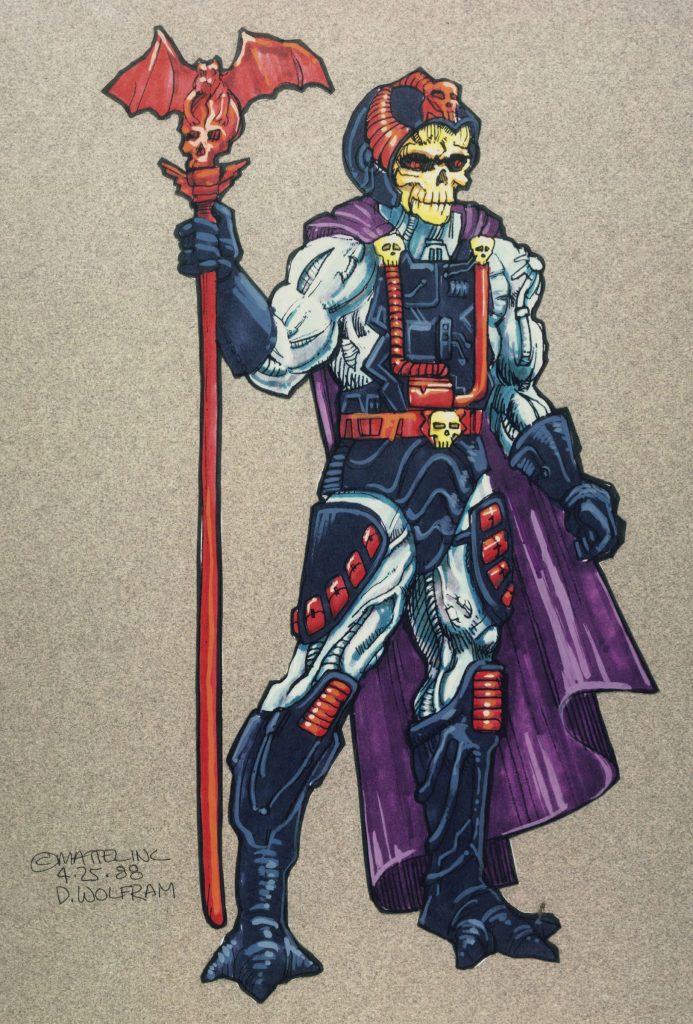
The concept version of the character actually makes an appearance on a 1989 bag, although this version has a red cape:
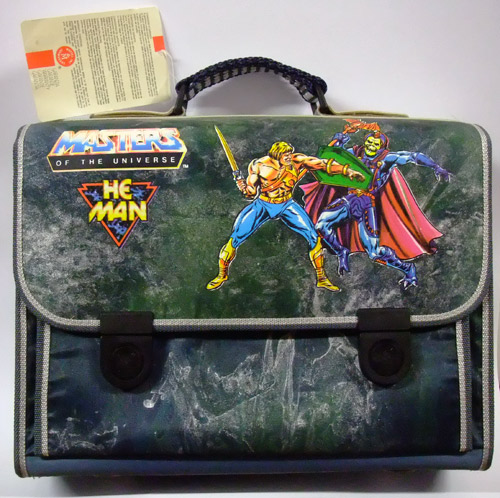
A CGI version of the concept Skeletor (albeit with a finalized staff) also appears in a promotional video (thanks to Dušan M. for the tip):
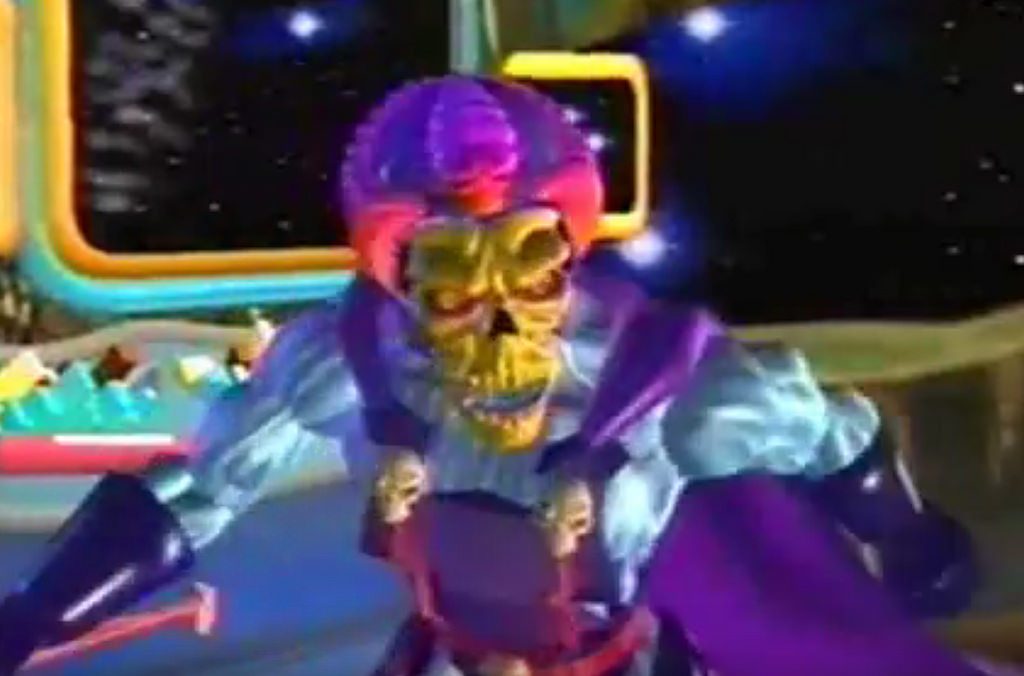
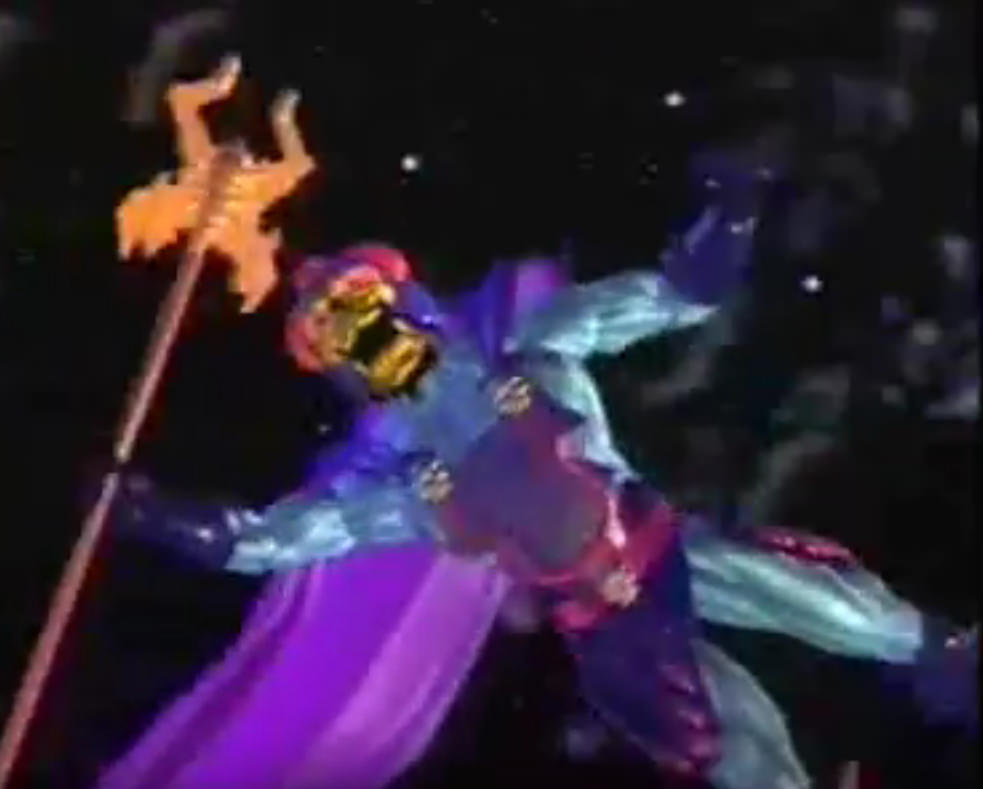
In the produced toy, the color scheme was altered again, with much more red throughout the costume, and contrasting purple boots and gloves. The staff was redesigned, with some prongs at the end that look like they could shoot bolts of electricity. The helmet and staff were molded in gun metal gray. The pouches he was wearing on his thighs were changed to cybernetic implants.The final figure has a white face with a forest green border around it – the only Skeletor to feature that particular color scheme.
A hand-painted version of the final figure appears in the 1989 French He-Man catalog:
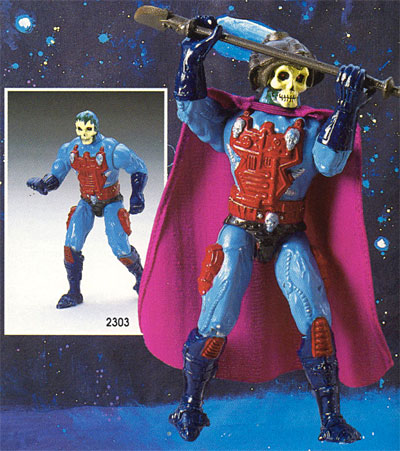
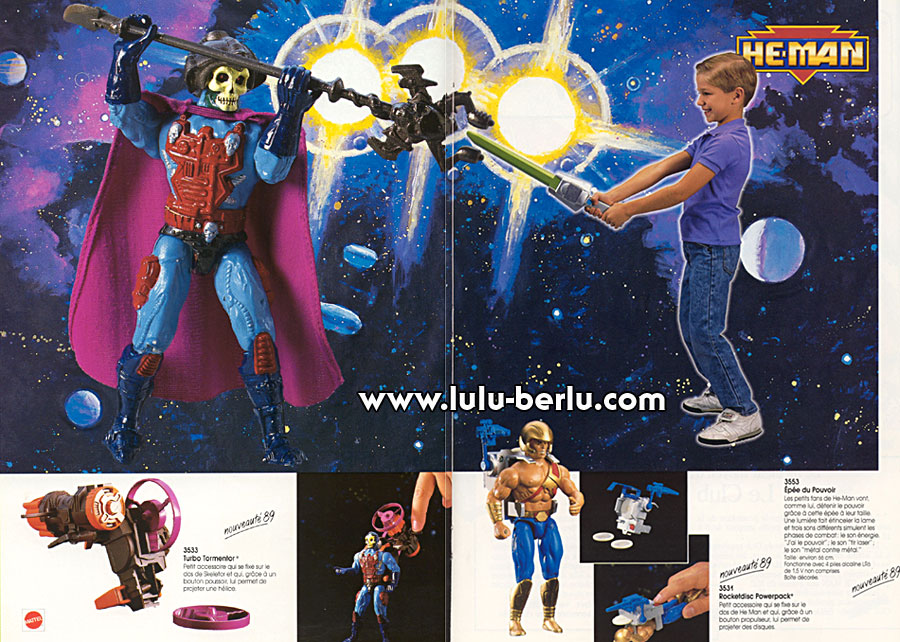
In the 1989 German He-Man magazine, Skeletor is depicted a couple of times wearing a bizarre-looking helmet. I’m not sure exactly what it’s supposed to be:

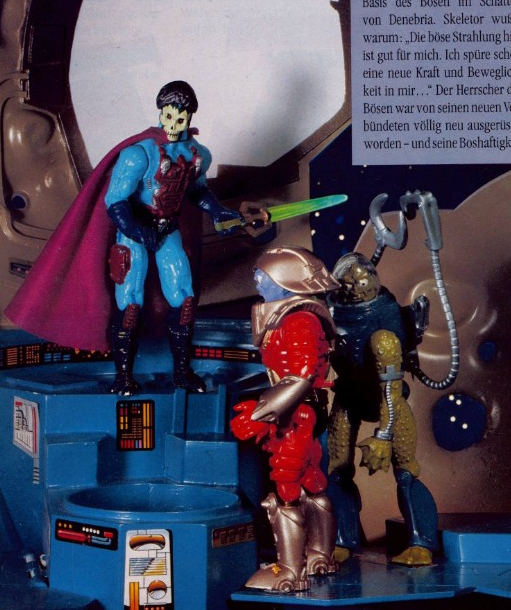

The final production figure appears in the US 1989 dealer catalog:
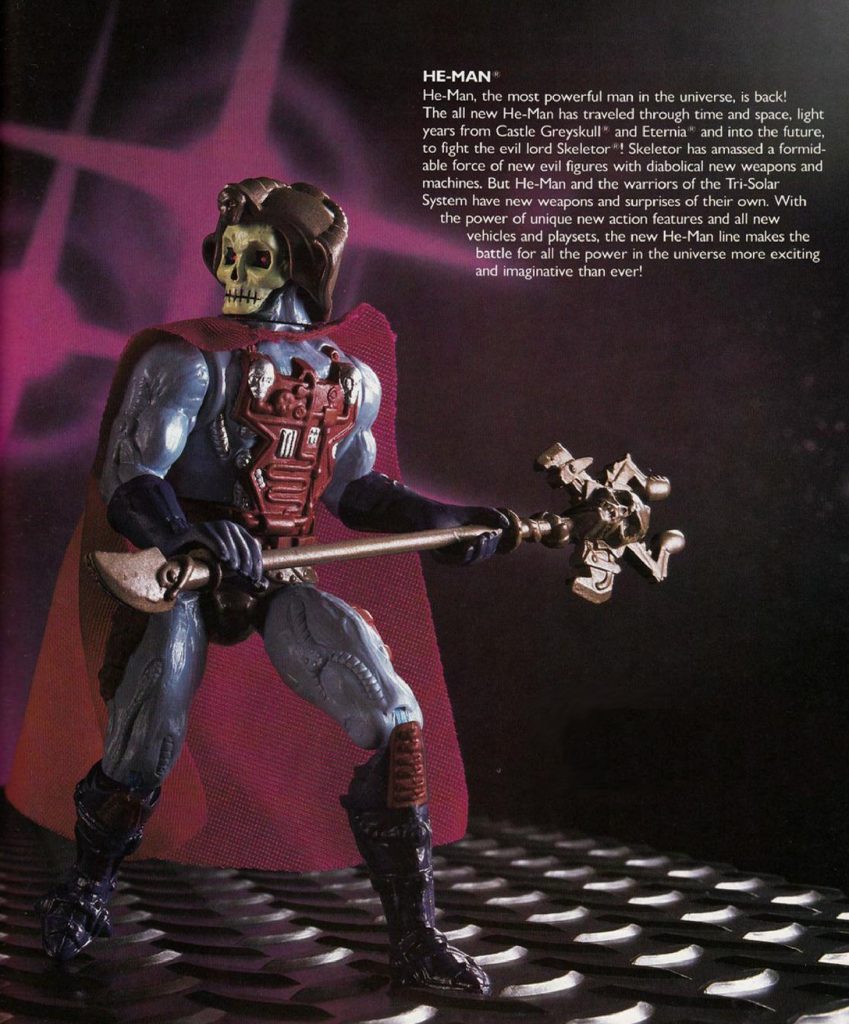


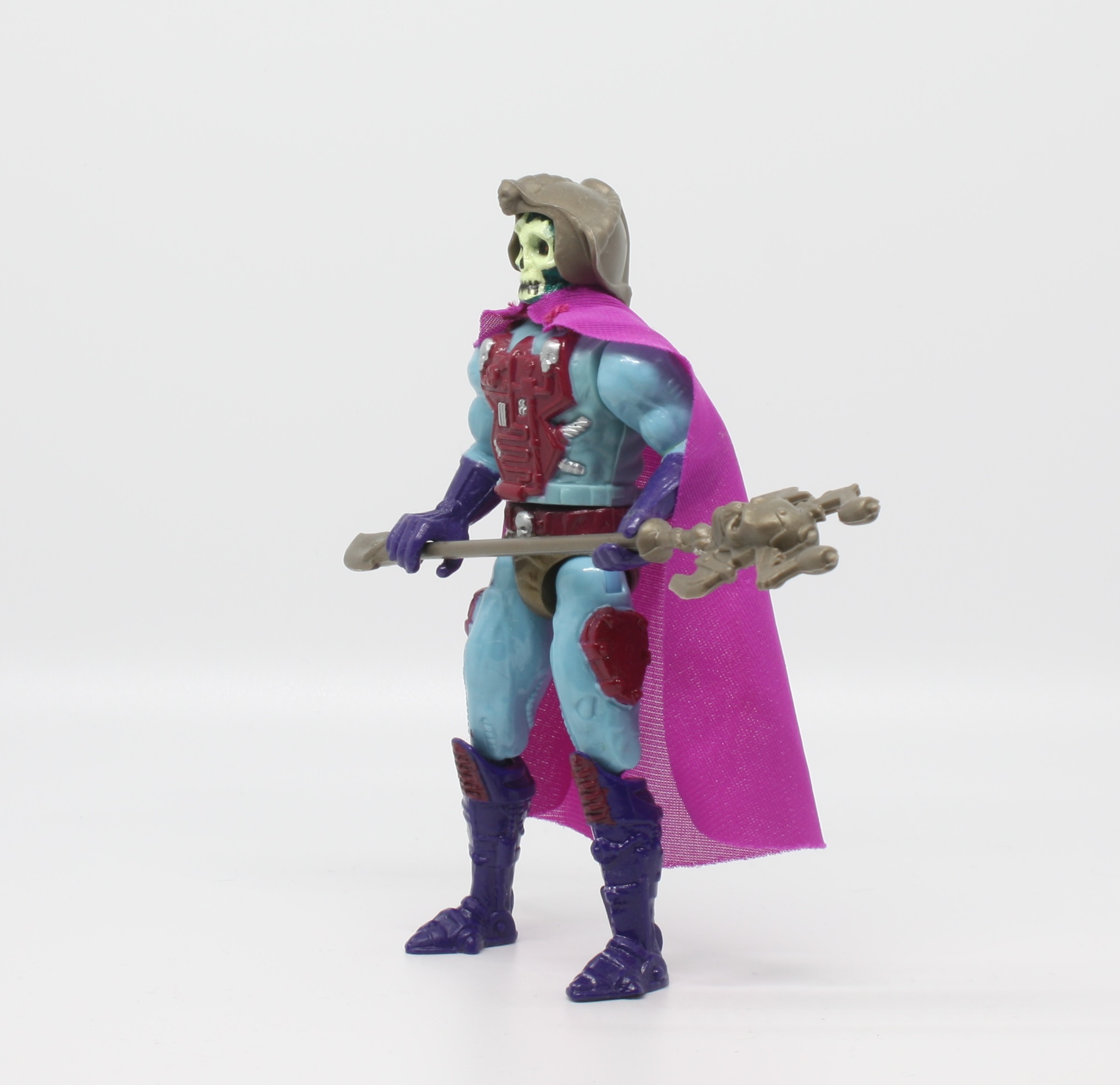

One of the coolest things about the figure, in my opinion, is some of the sculpted detail on his back and the back of his head. This is obscured by his cape and helmet normally. It’s quite creepy looking:

The staff has a rather creepy looking, chitinous creature around the back of the skull, which wraps its tail around the upper handle:


Skeletor has a fun but rather subtle action figure. When you turn his waist his hands raise up, making him lift his staff as if to fire.

The commercial for the electronic He-Man Power Sword actually has really great footage of an actor dressed as “New Adventures” Skeletor. This costume also shows up in the He-Man vs Skeletor commercial shown earlier in this article.
Skeletor was sold on his own card and in a gift set with He-Man. The artwork on the front was painted by long-time MOTU packaging illustrator, William George.
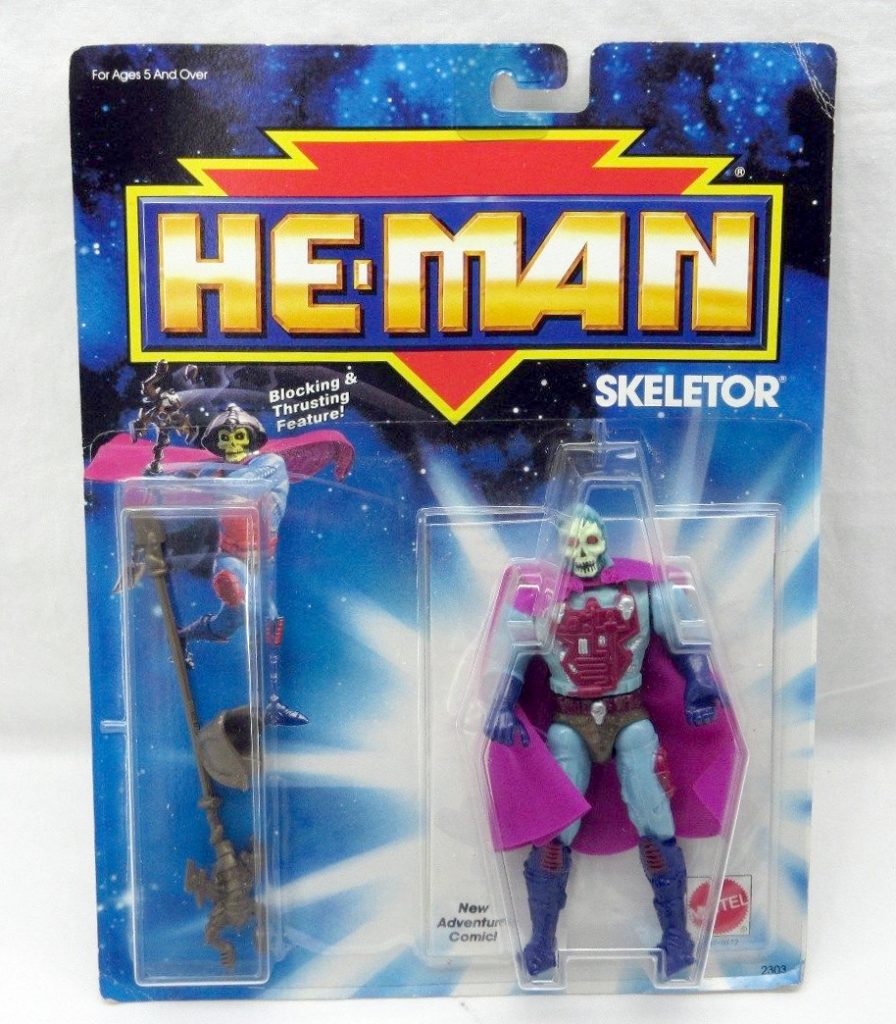
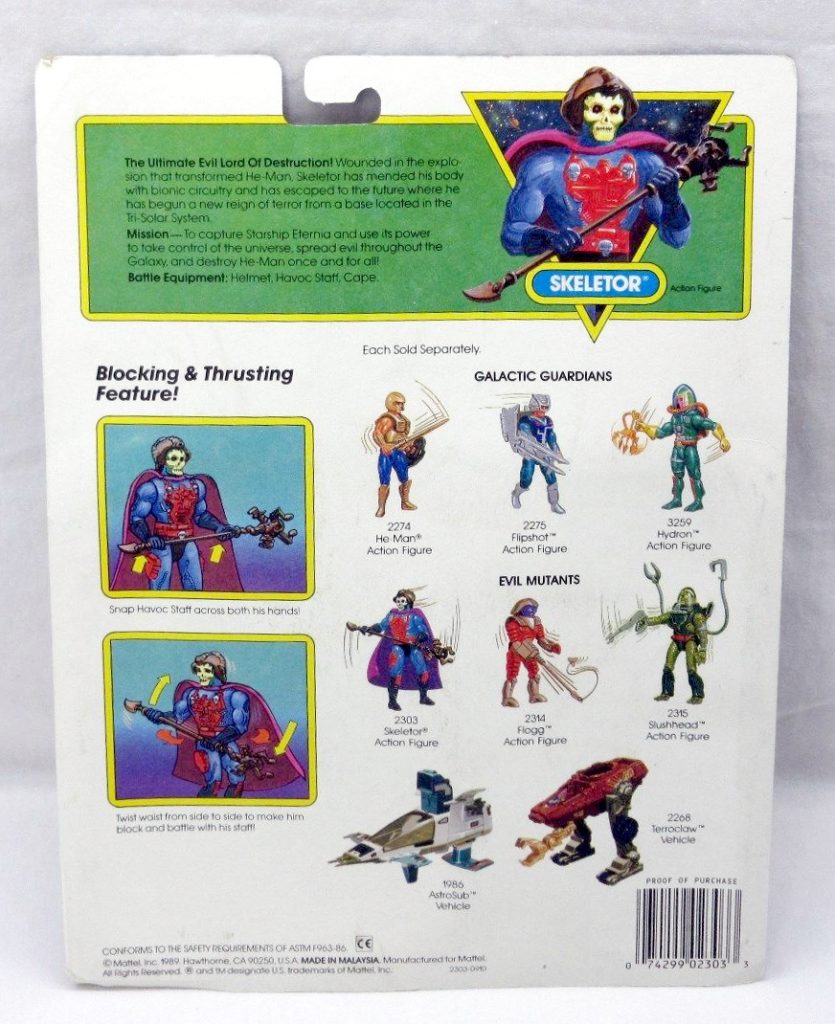


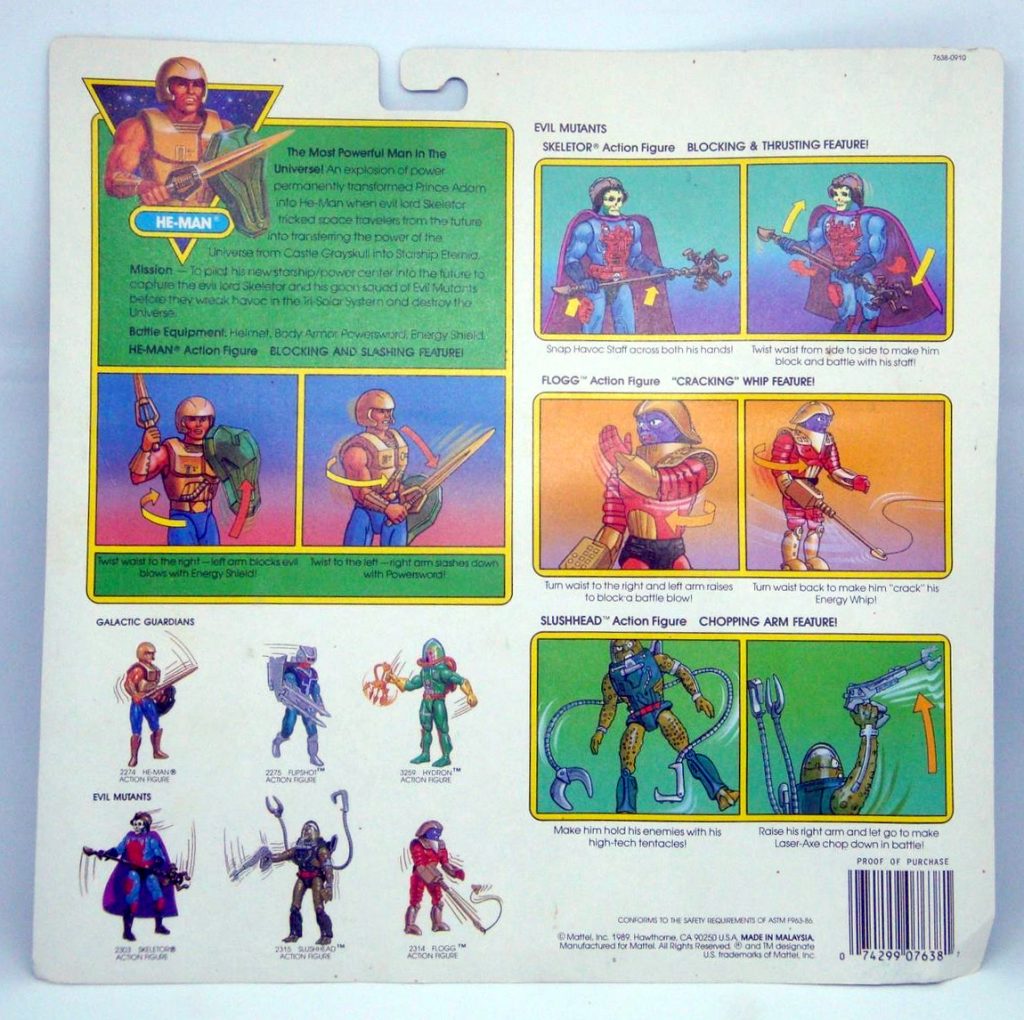
According to the 1989 Sears Christmas Wishbook, Skeletor was supposed to be available in a gift set with Hydron, but I’ve never seen an example of that:


There were four minicomics produced for the 1989 He-Man reboot, and all of them featured Skeletor. In the first, The New Adventure (illustrated by Errol McCarthy), Skeletor interrupts Prince Adam as he transformed into He-Man, and is badly injured. In Skeletor’s Journey (illustrated by Carrol Lay), he uses bionic replacements to heal himself and we see him finally in his new costume.
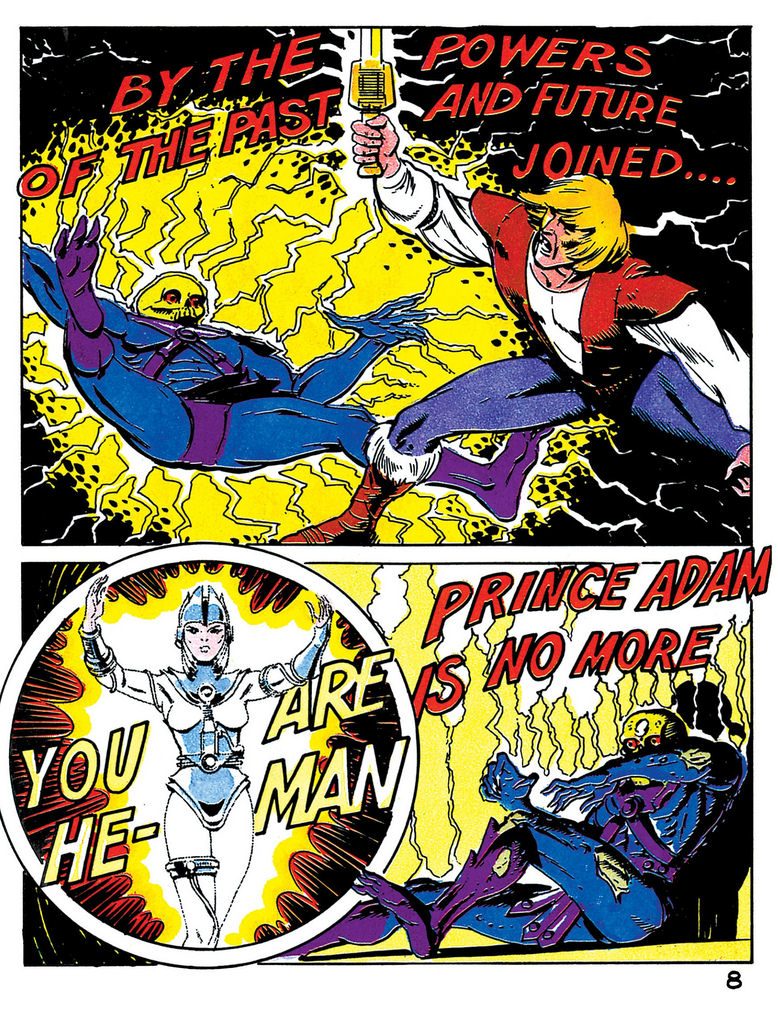
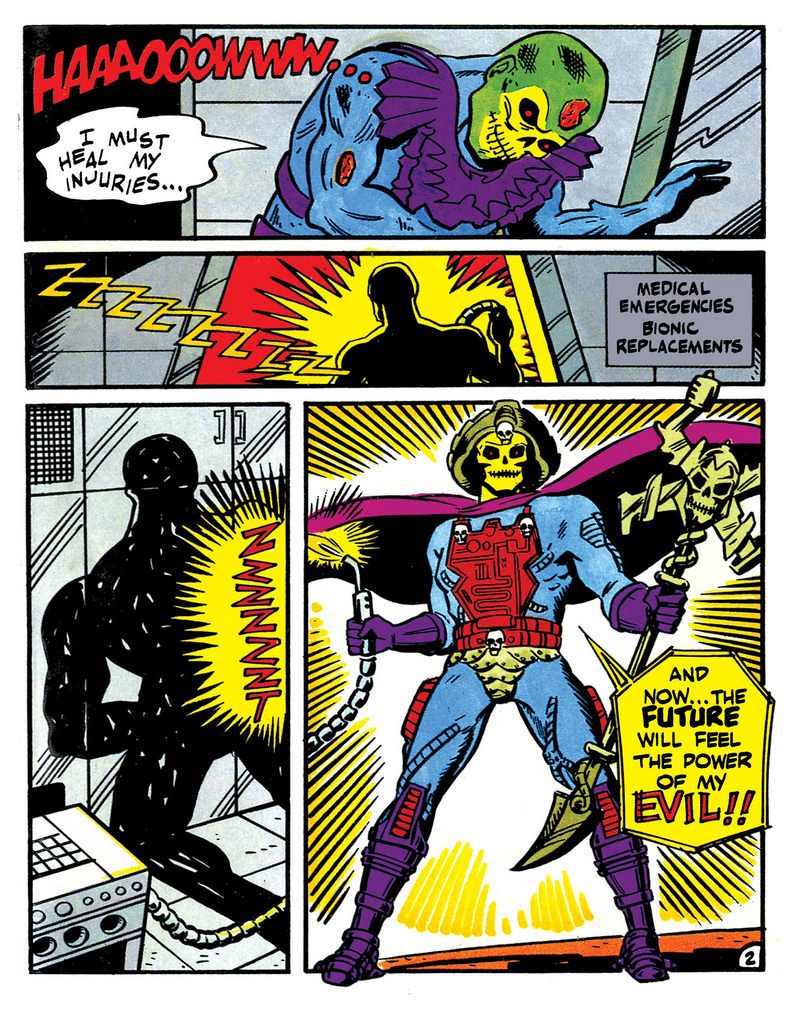
The character looks particularly dynamic in the Bruce Timm-illustrated The Revenge of Skeletor:
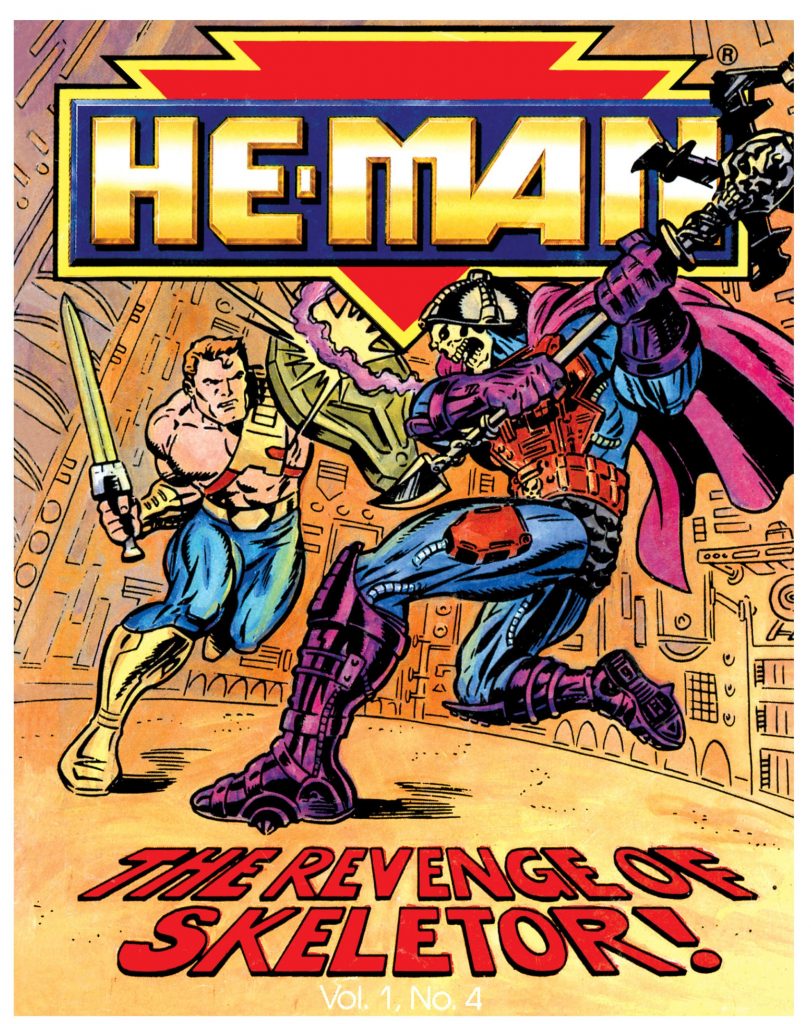

The New Adventures of He-Man animated series (produced by Jetlag Productions) features the character for a surprisingly few episodes before he’s upgraded to his Disks of Doom variant costume. The series starts off on Eternia, before He-Man and Skeletor are whisked off into the future, but both of them already sport their New Adventures costumes. Unfortunately Skeletor has some off-putting and comical-looking eyes for the first five episodes. Otherwise his costume is fairly true to the toy, minus the electrical implants in his body:

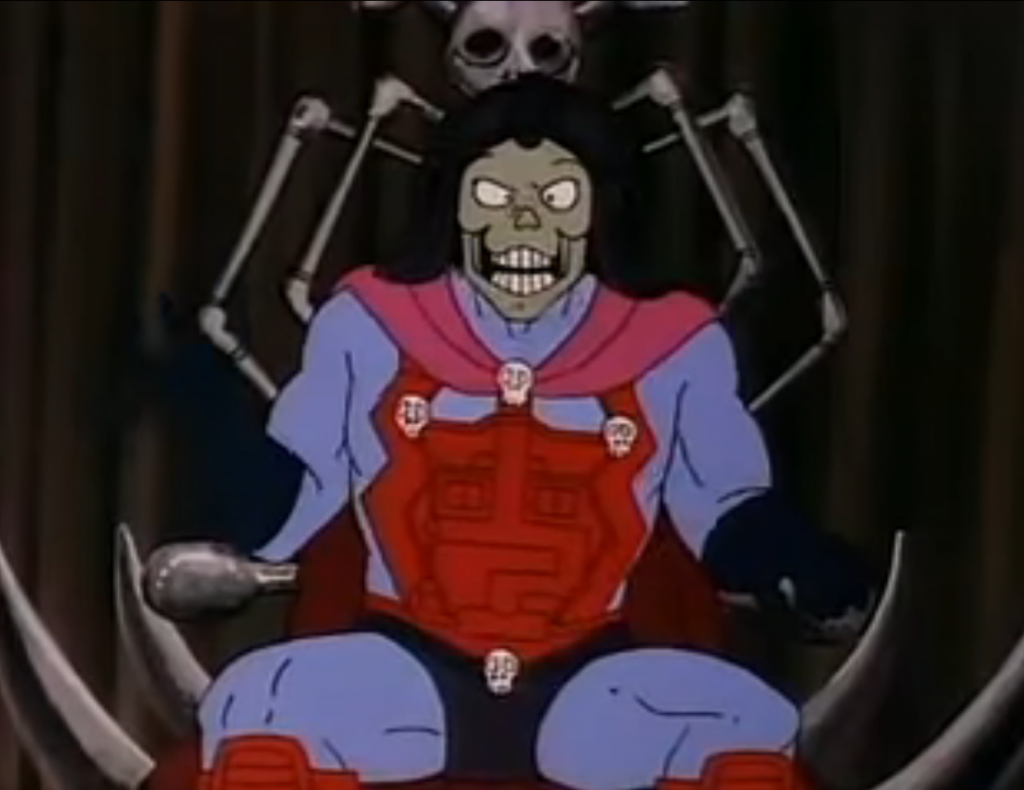
By episode six the eyes are blackened, but he also changes to his Disks of Doom costume by the end of the story:
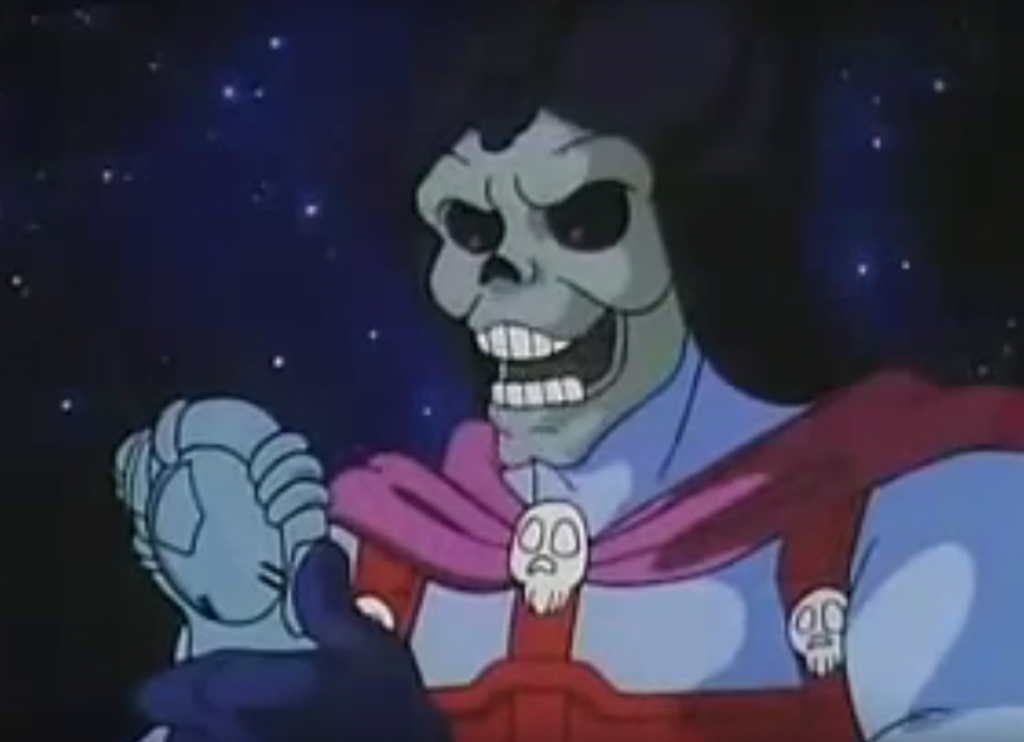
Character-wise the New Adventures version of Skeletor was a more comical figure, manipulating and flattering rather than pounding his fists and demanding. He wasn’t leading his own army at this point – he was dependent upon the cooperation of the Evil Mutants, lead by Flogg.
Initially Mattel had planned to ask Filmation (the studio that had produced the first He-Man cartoon), to animate the new reboot, to be titled He-Man and the Masters of Space (information via Dušan M./James Eatock). Filmation went out of business in 1989, but they did create some artwork and a basic storyline for the pitch. Skeletor’s visual depiction is somewhere midway between the original concept design and the final toy:

Image via the Ancient Library of Grayskull Facebook group/Dušan M.
The 1989 He-Man series was featured in the UK He-Man Adventure Magazine. In this story Skeletor is beamed aboard the ship of Flipshot and Hydron, but Prince Adam tags along for the ride. Strangely we don’t get an explanation for Skeletor’s costume change (images are from He-Man.org):


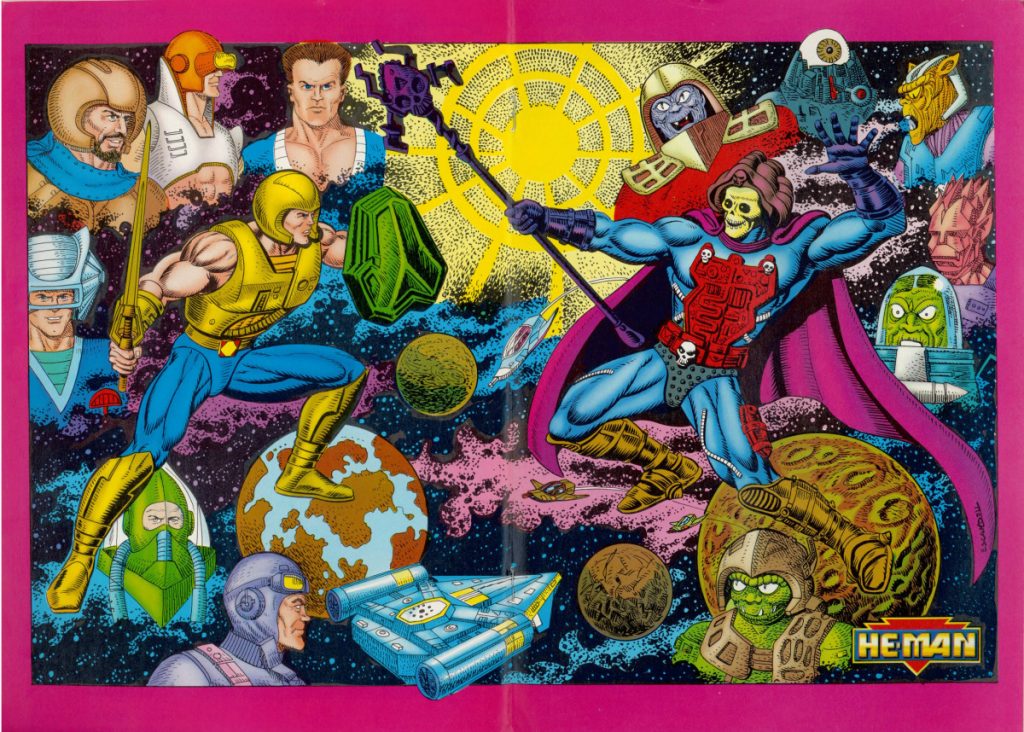

Pinup from German He-Man magazine. Artwork by Giuliano Piccininno – information is from the MOTU Art Facebook page.
There was a series of Italian notebooks that featured New Adventures artwork. The cover of one of them features a concept-art inspired Skeletor (thanks to Petteri H. for the tip):
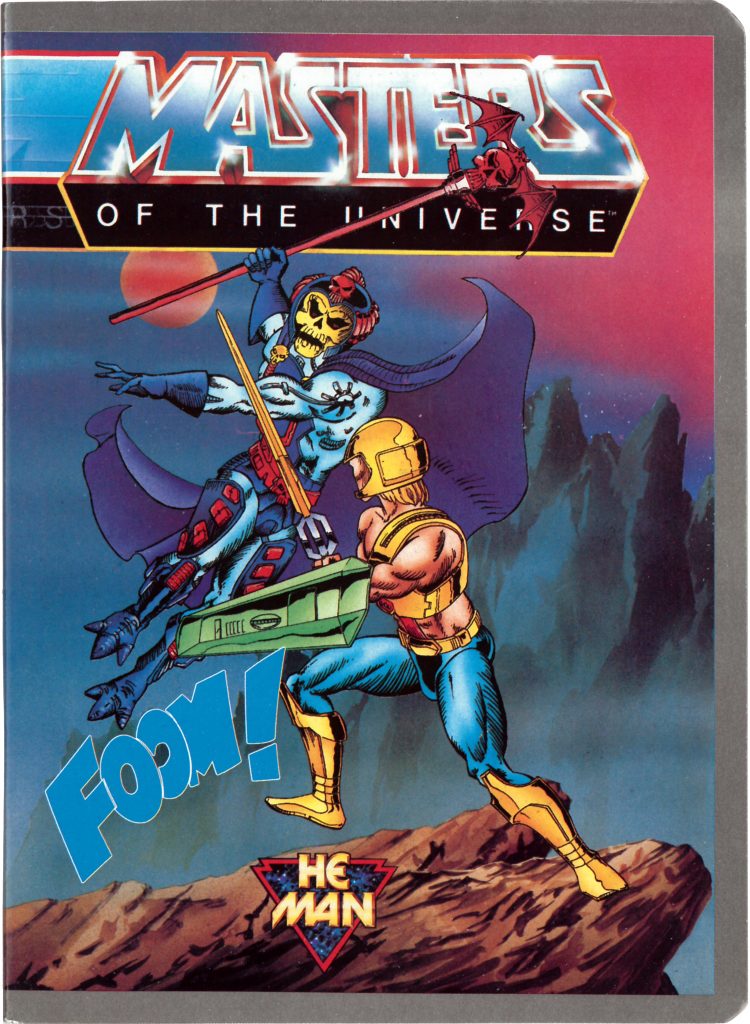
The Italian magazine Magic Boy featured several New Adventures stories. In one of them, Skeletor acquires a magical chest harness from a six-armed statue and soon after grows six arms of his own (images are from He-Man.org):


Overall I think the rebooted 1989 Skeletor has quite a compelling design, and is worth picking up even if you’re not, generally speaking, a New Adventures fan. In fact, all of the revamped Skeletors are worth a look.
